With a sleek, modern style becoming the new trend in home design, chandelier makers are turning from the traditional designs to modern light fixtures instead. Not only do they add an elegant and modern piece to the room, but they’re becoming pieces of art in their own right.
The creativity that goes into designing and manufacturing these modern chandeliers is pushing the boundaries on the line that constitutes furniture and works of art. With that said, here are some tips on choosing which modern chandelier is best for you:
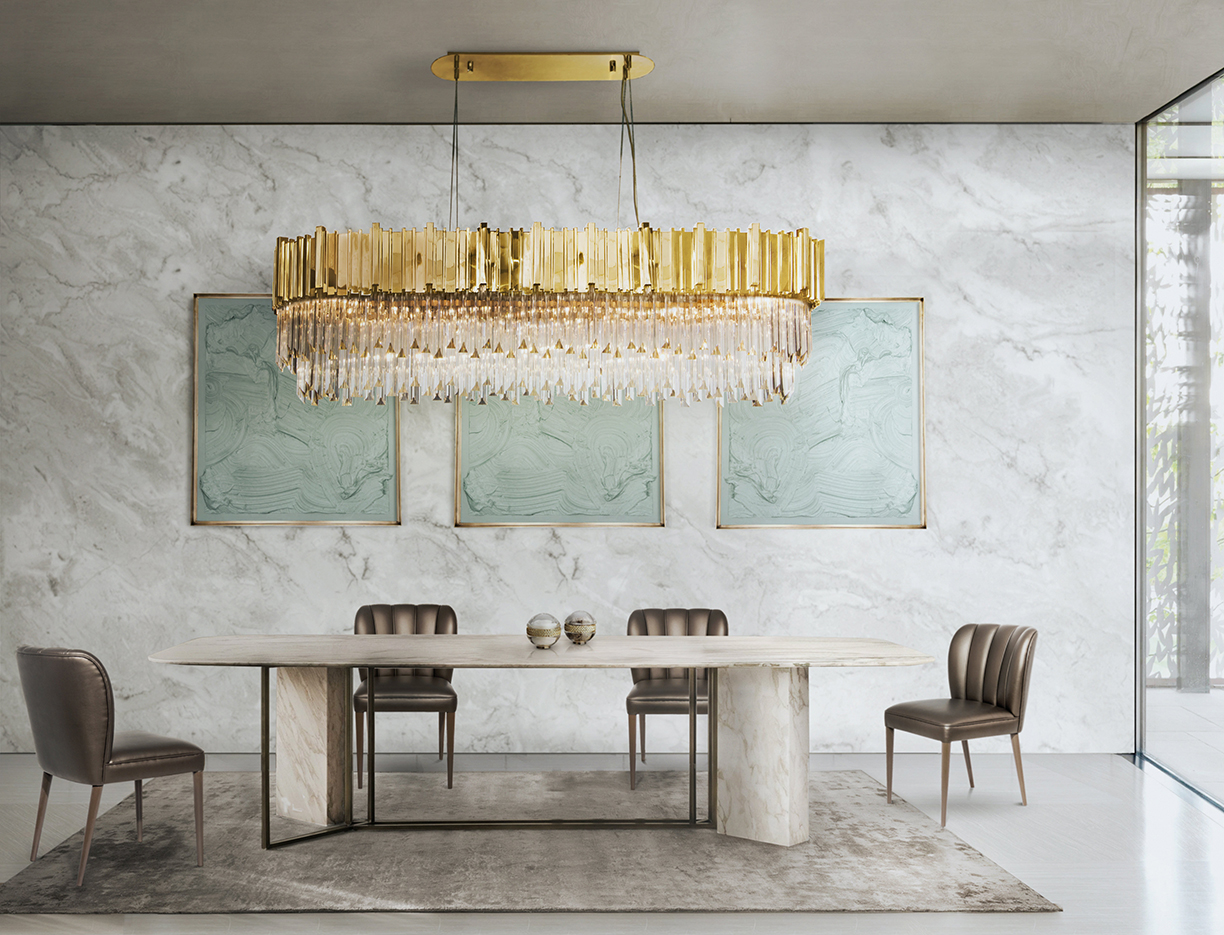
Photo courtesy of Covet NYC
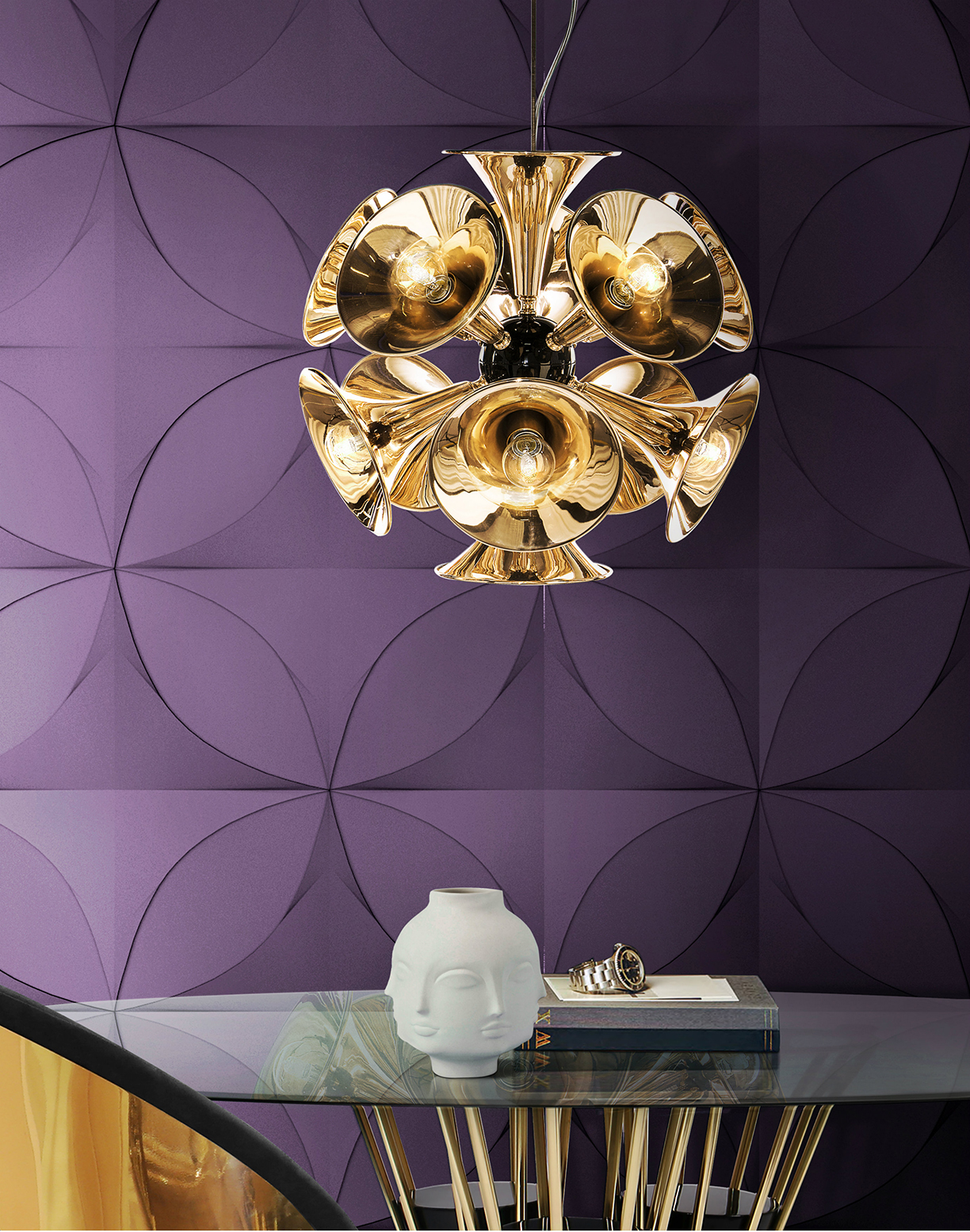
Photo courtesy of DelightFULL
1. Get Creative with Material
With any modern chandelier, the material matters. Getting creative with the material used to create the chandelier can add a great addition to the room’s decor. Creativity is proven to go a long way in designing the perfect modern chandelier.
The Botti pendant lamp, inspired by the American trumpet player Chris Botti, adds a fun twist by using trumpets as the main material of the chandelier. While still luxurious in its style and design, it adds personality and a conversation piece to the space. While the chandelier is more retro in its style, using a creative material and thinking outside of the box can be beneficial for whichever style is preferred.
2. The Space it Resides
Both small and large chandeliers can be a great addition to any space. It’s important, however, to consider the type of space when choosing which modern chandelier to include in it. For a foyer or room with high ceilings, look for a larger chandelier to create a major focal point. In spaces like dining and living rooms, a smaller chandelier will still be a work of art, yet it won’t take away from the rest of the design in the space.

Photos courtesy of Muse Residences
In recent years, more and more hotels and apartment buildings are getting rid of the traditional designs and replacing them with modern and sophisticated styles instead. The modern chandelier in this residential building is certainly the focal point, simply for its sheer size and elegance. When visitors and residents walk into the building, they are in awe of its design.
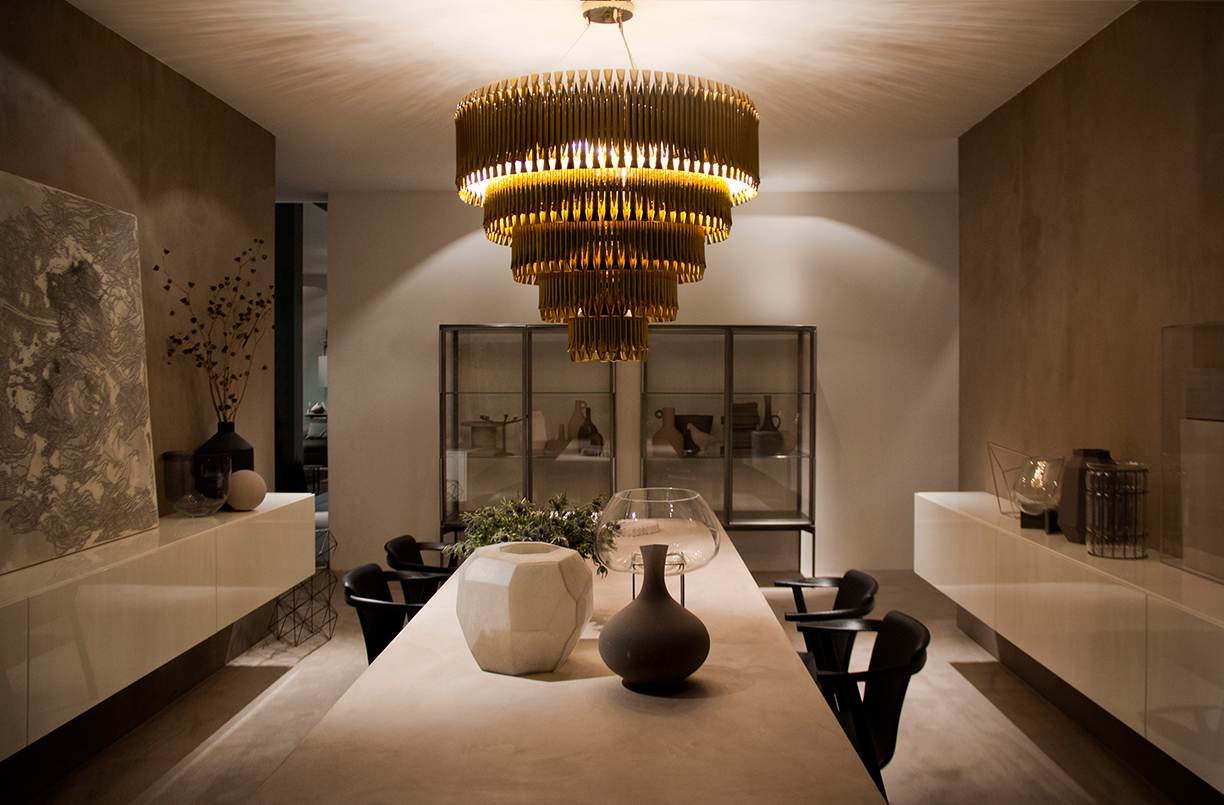
Photos courtesy of DelightFULL
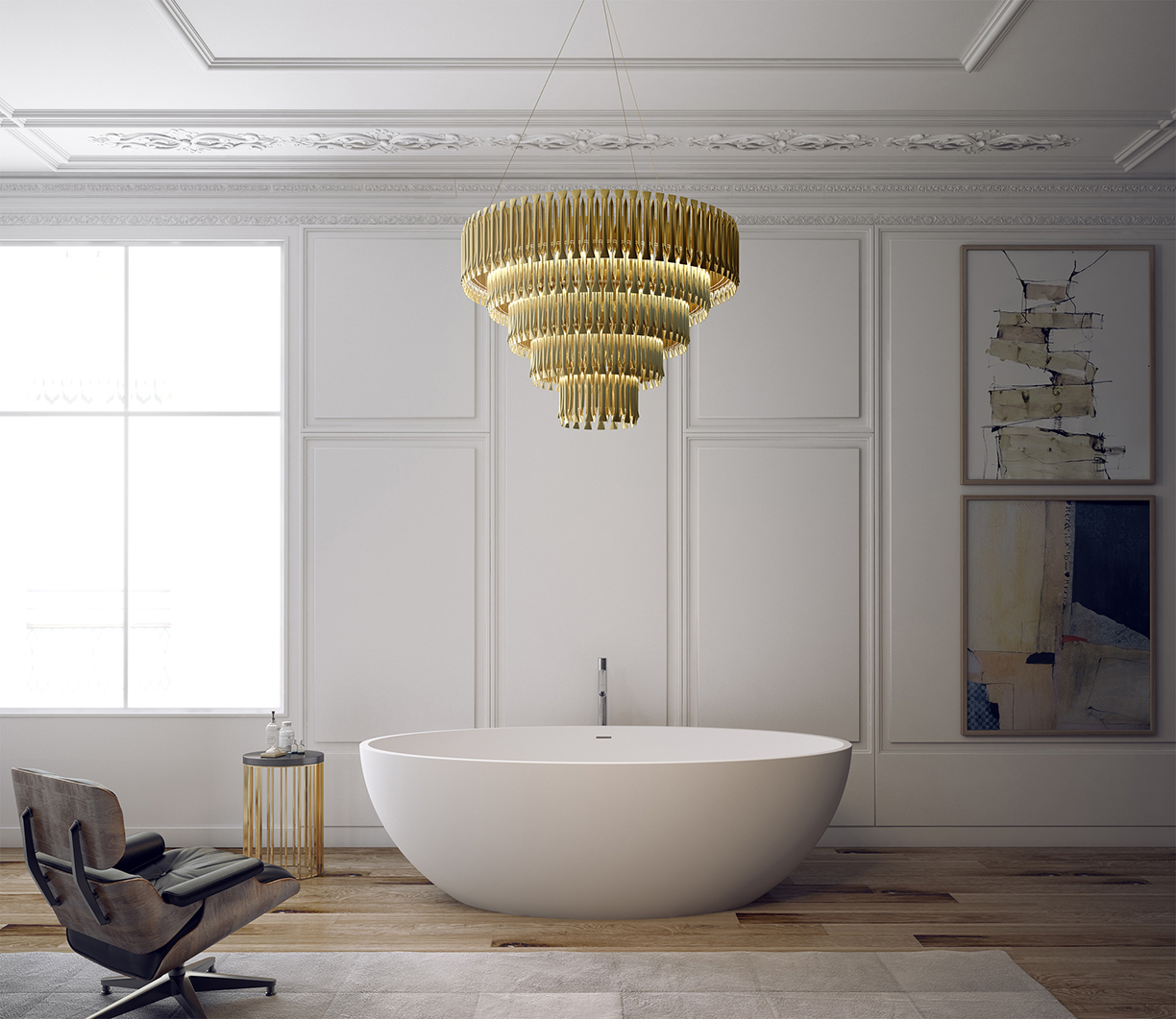
3. The Lighting
In terms of lighting, either a dramatic flair or a softer hue can be a great addition to any space. While the design and material of chandeliers can be similar, the lighting can make a major difference in the atmosphere in the space.
While the first chandelier provides a dramatic light in a darker room, the second provides a more subtle light in a room ample natural light. Both, however, add to the design and atmosphere of the space.
4. A Work of Art
Regardless of the material, design and lighting, it’s crucial to remember the creativity a modern chandelier allows. Whether it’s above a dining table, in the living room as a statement piece or the focal point of the foyer, modern chandeliers aren’t simply light fixtures anymore — they’re works of art.
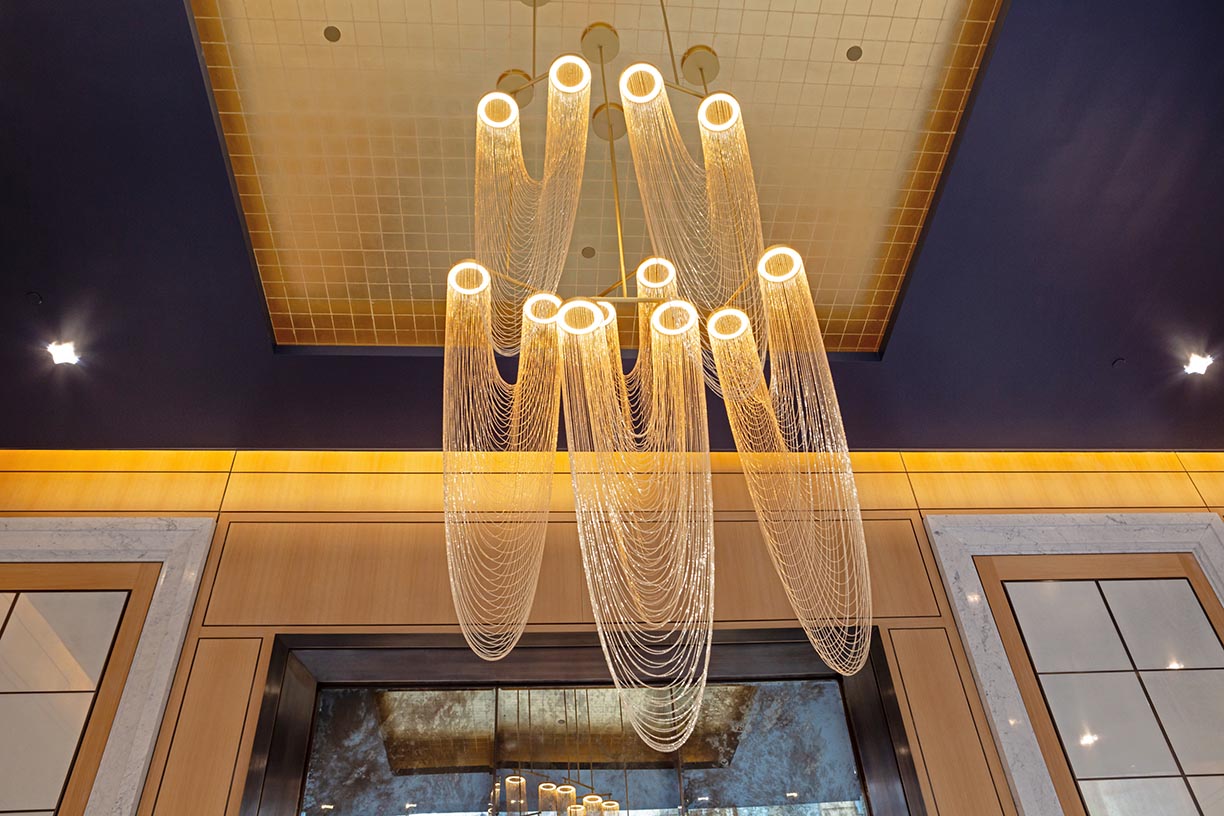
Photo courtesy of The Alyn
Whether you’re organizing that shoe collection that keeps on growing, displaying your endless accessories, or if you’re striving for a clean, minimalist style and feel, a little extra storage never hurt. Even pricey and luxurious apartments in places such as New York City aren’t offering much space.
Get inspired with these storage tips and find the perfect place for everything in your home.
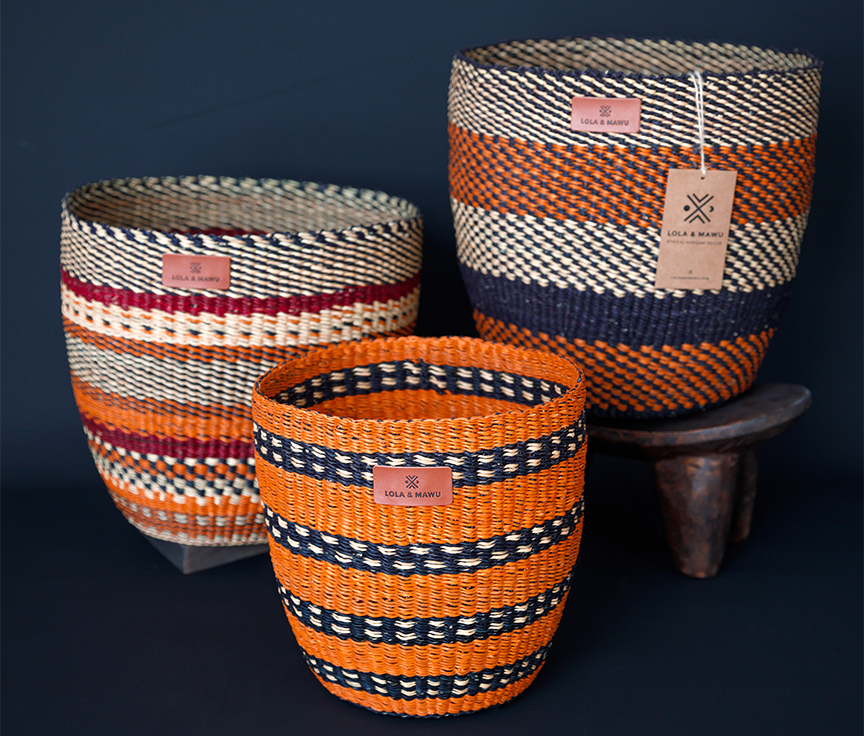
Photo courtesy of Lola & Mawu
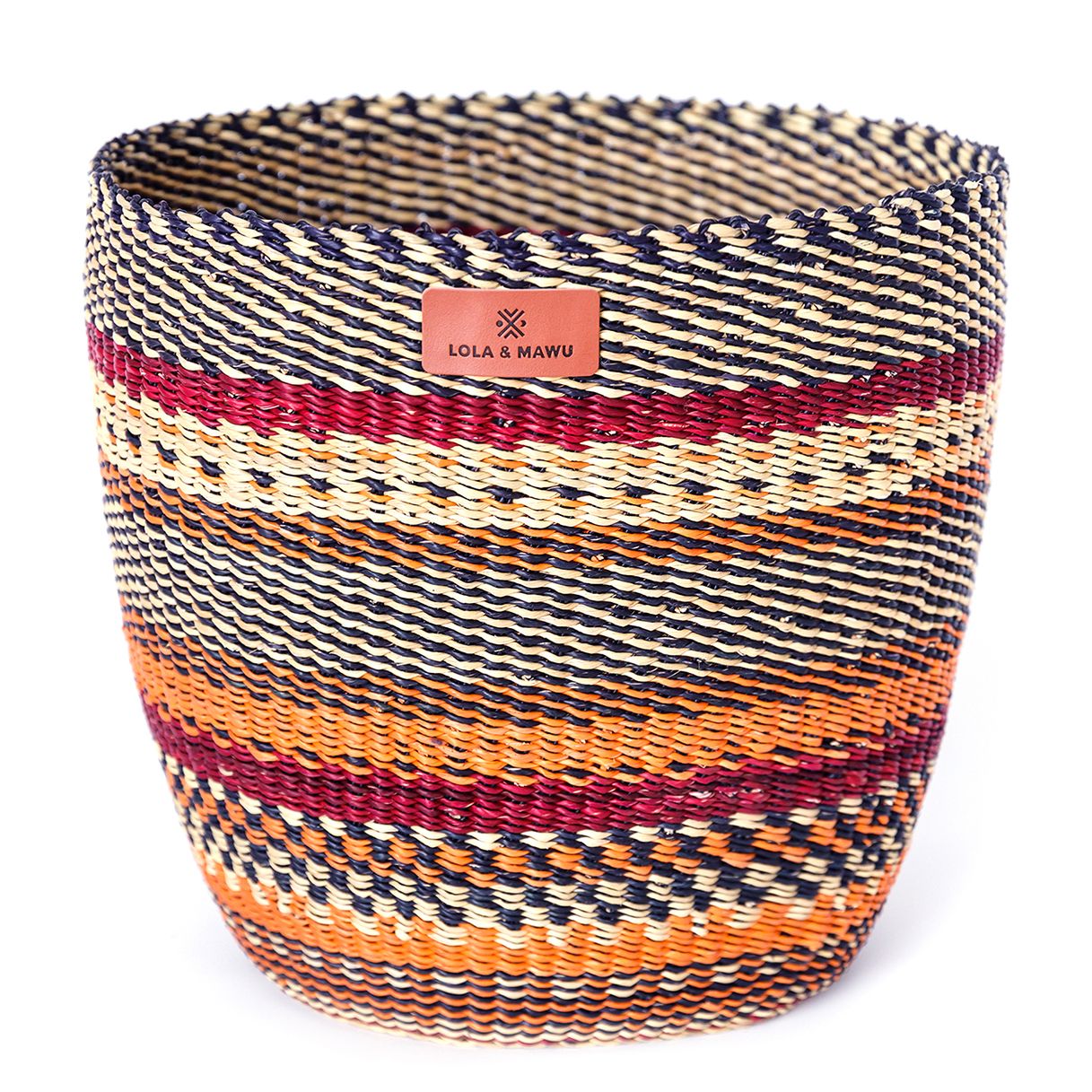
Photo courtesy of Lola & Mawu
Be bold and embrace your own style. Even if you are working toward a more neutral style with clean lines, it’s okay to introduce a few pops of color. Your storage is the perfect place to try new color schemes and patterns because they are easy to switch out and adjust with your growing taste and the changing seasons.
Portable, movable storage is the best kind of storage. The convenience of wheels should never be overlooked. If you’re hosting an event, entertaining guests, or simply looking for a fresh feel, storage that can be moved make the process of change seamless. Simply wheel a fun, stylish cart into the next room for all of your storage needs.
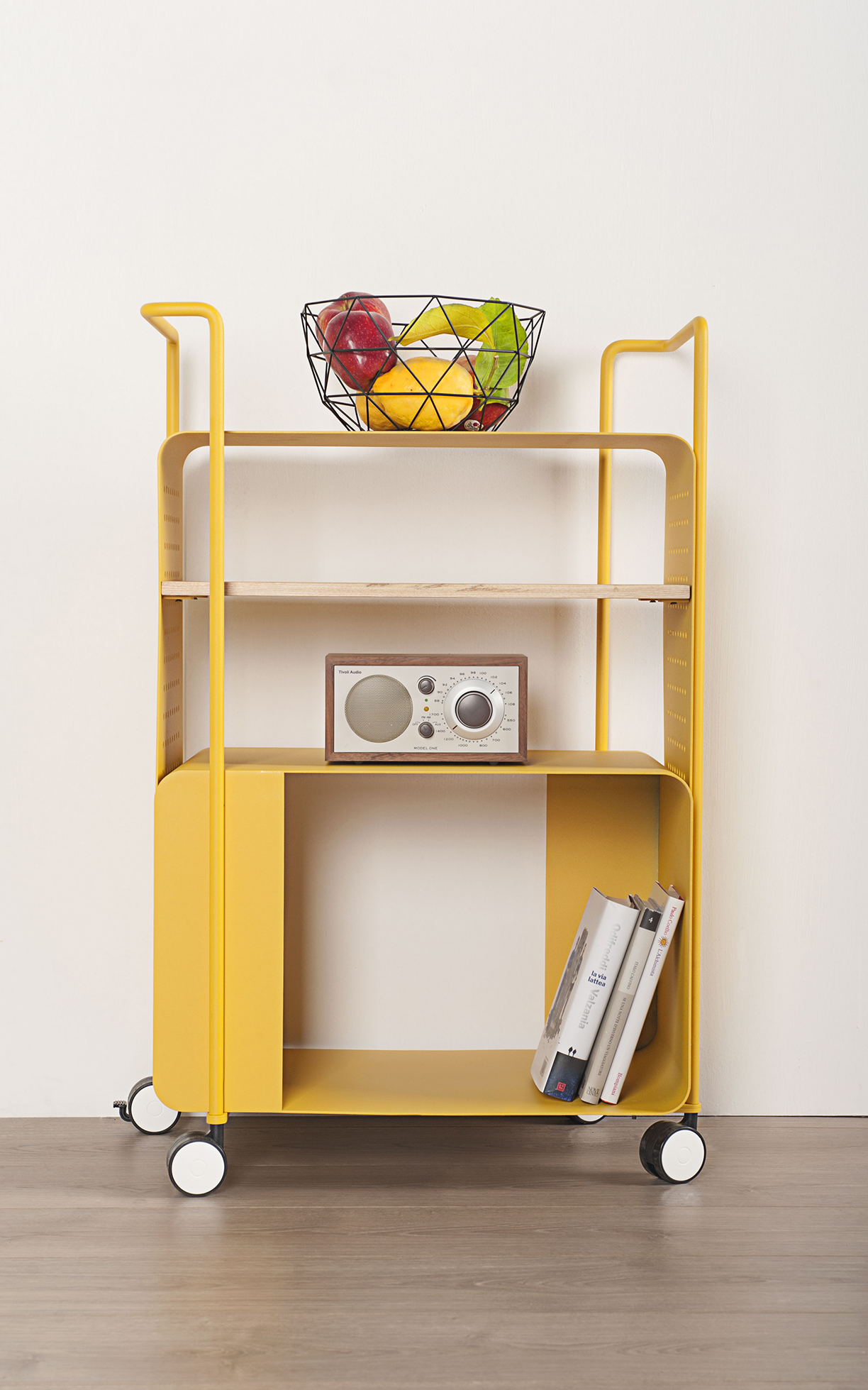
Photo courtesy of Lime Lace
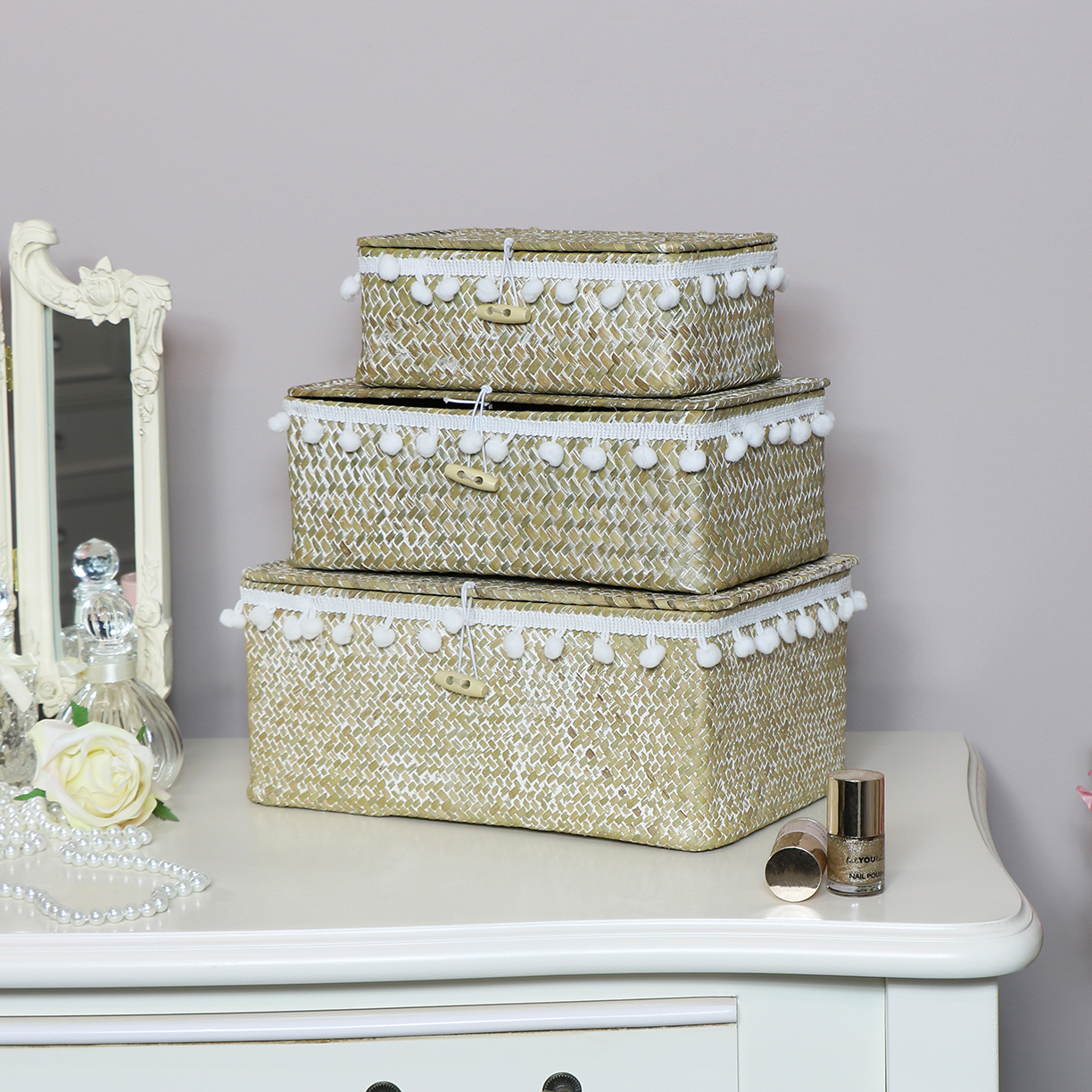
Photo courtesy of Melody Maison
There’s no shame in falling in love with storage space that is not the most functional. A few stacked baskets with a playful touch of fringe is a nice addition to your bedroom or bathroom. The layered look adds complexity and style to your room, and it can still be functional for small items and accessories.
When in doubt, try under the bed. The space below your bed was made for storing blankets, shoes, winter sweaters and more. Built-in storage is even less noticeable under your bed and ensures that you’ll always have a little extra room to stash your bulkier items or less used items. These clever built-in draws will help clean up any bedroom.
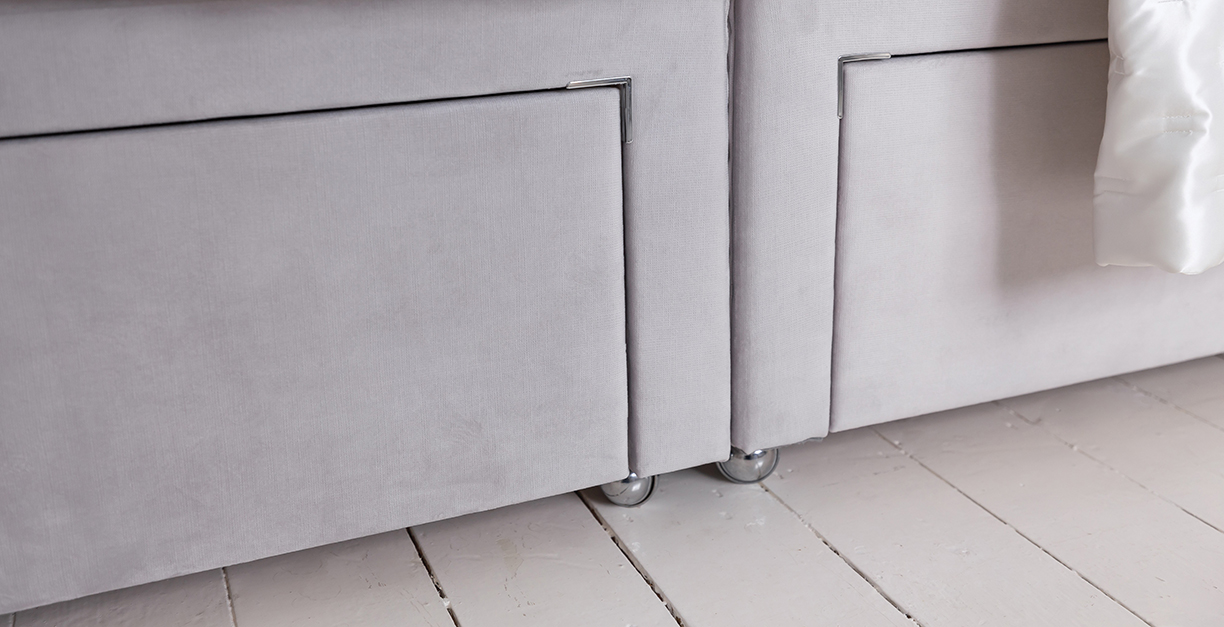
Photo courtesy of The French Bedroom Co.
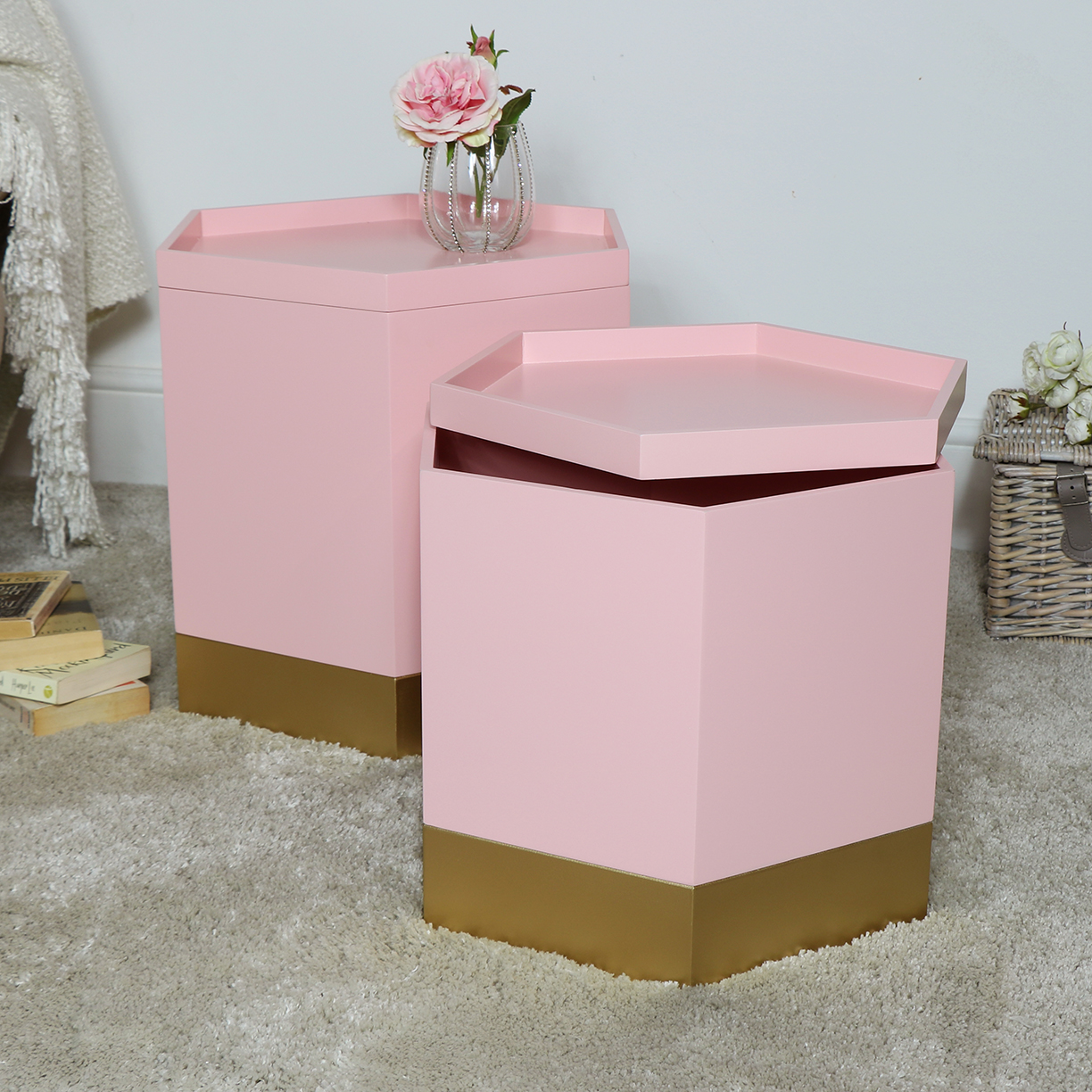
Photos courtesy of Melody Maison

Multi-functional is never a bad thing. Side tables, ottomans, benches, and other furniture that offer a hidden storage section is a dream come true. Forget searching for bulky storage options that take up space and ruin your decor. Find a charming side table that serves as a storage unit to declutter any room.
Transform your space with the perfect area rug. Trust stylish finished designs or customize your space with a tailored project.


Customize Until You’re Content
Rug’Society offers a bespoke customization service that is flexible and fun. Customers choose from a variety of colors, shapes, patterns, and textures to create a rug they can enjoy for years to come. The company also offers the help of a brand expert to guide you through the process.
Complete any room in your home with a rug that is uniquely you. Whether you’re looking for warm colors and plush textures, or an elegant neutral rug, there’s plenty from which to choose.
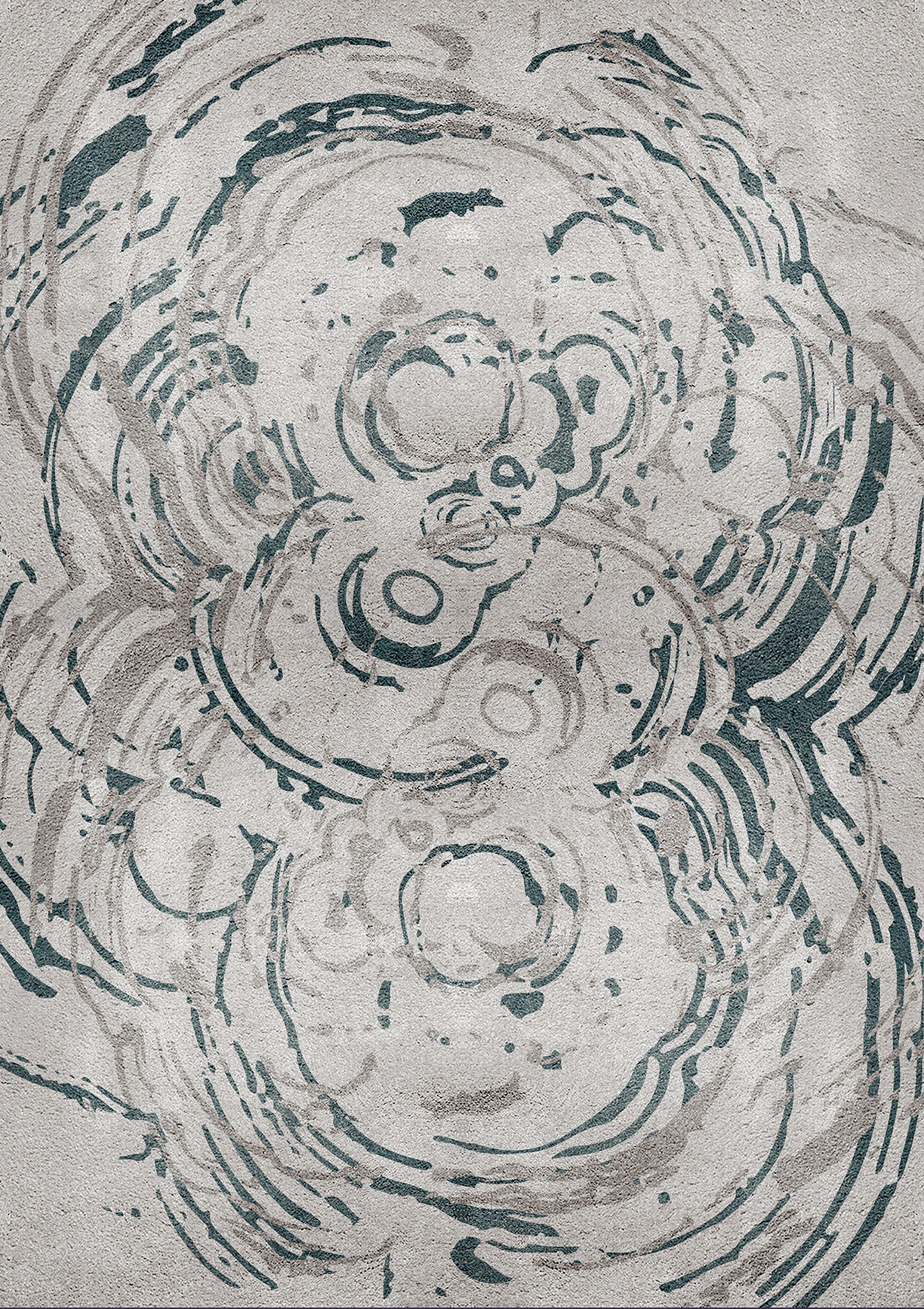
Choose the Right Rug for You
Bare floors are the perfect canvas for an inspiring, conversation-starting area rug and they are often a focal point in a room. Choose a larger area rug to create a gathering space in your living room.
For the bedroom, create a cozy domain by placing a rug under your bed allowing it to extend forward. This can give the appearance of a bigger space full of comfort.
Consider what type of traffic a rug will endure before purchasing. If you need a rug for your living room, remember to choose something that can withstand the occasional coffee spill or stray crumb.
Darker colors, whether they are on your walls or your floor tend to make a space feel smaller, while lighter shades can open a room up, making it feel larger.
Place you’re furniture along the edges of a beautiful rug making it visible for you and your guests to fully enjoy. This also helps create a more spacious feel.
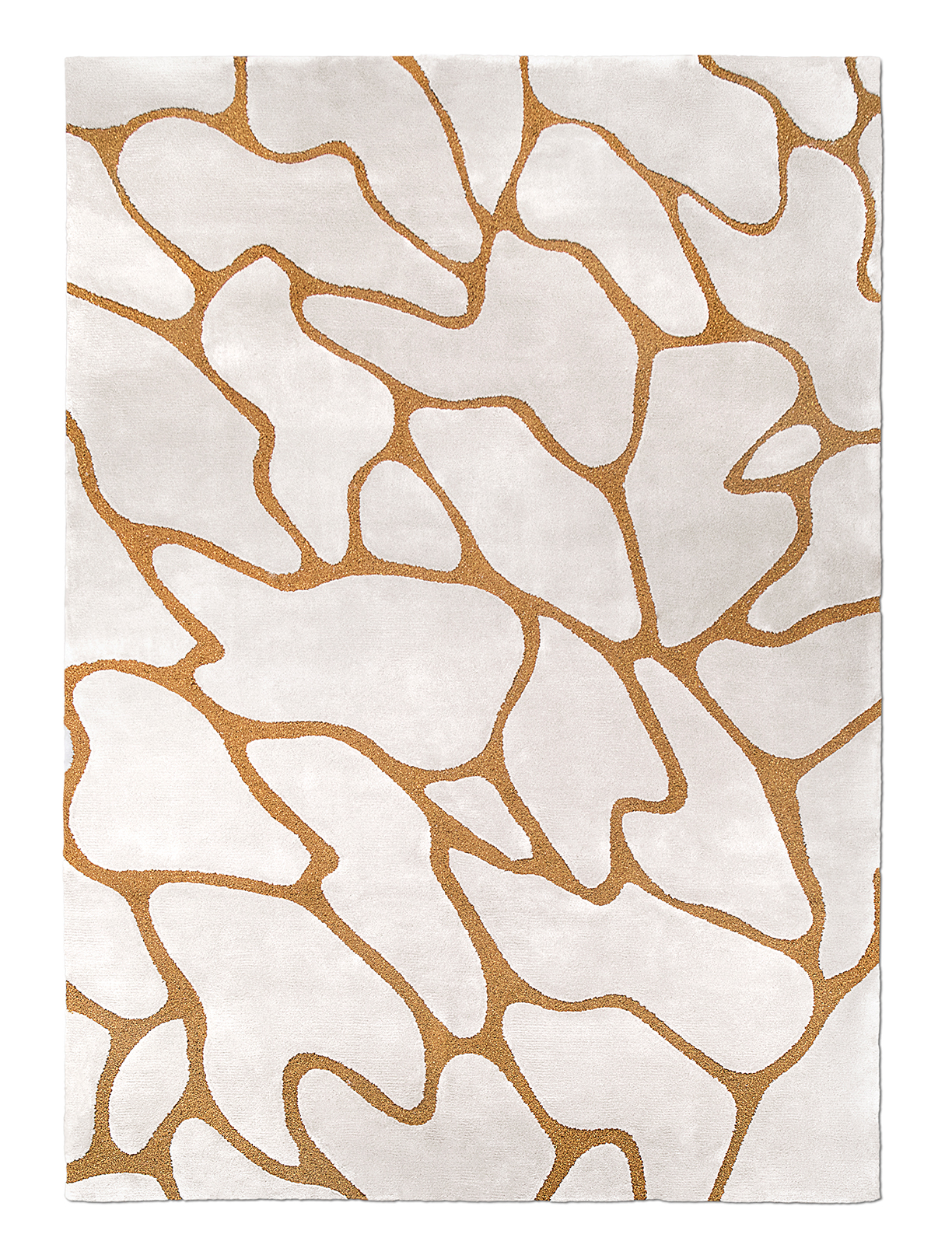
Trends You Don’t Want to Miss
Neutral Colors — discreet tones can add an elegant touch.

Asymmetrical — the trend breaks tradition with eye-catching designs.

New Vintage — classic themes mix perfectly with modern elements.

Neo-Cubism — geometric shapes and 20th-century avant-garde expressions.

Photos by Rug’Society
Trends and styles traditionally fade out of the limelight only to resurface a few generations later, usually with a few twists and fresh perspectives. But retro themes and designs remain popular and are now making an appearance in the realm of luxury.
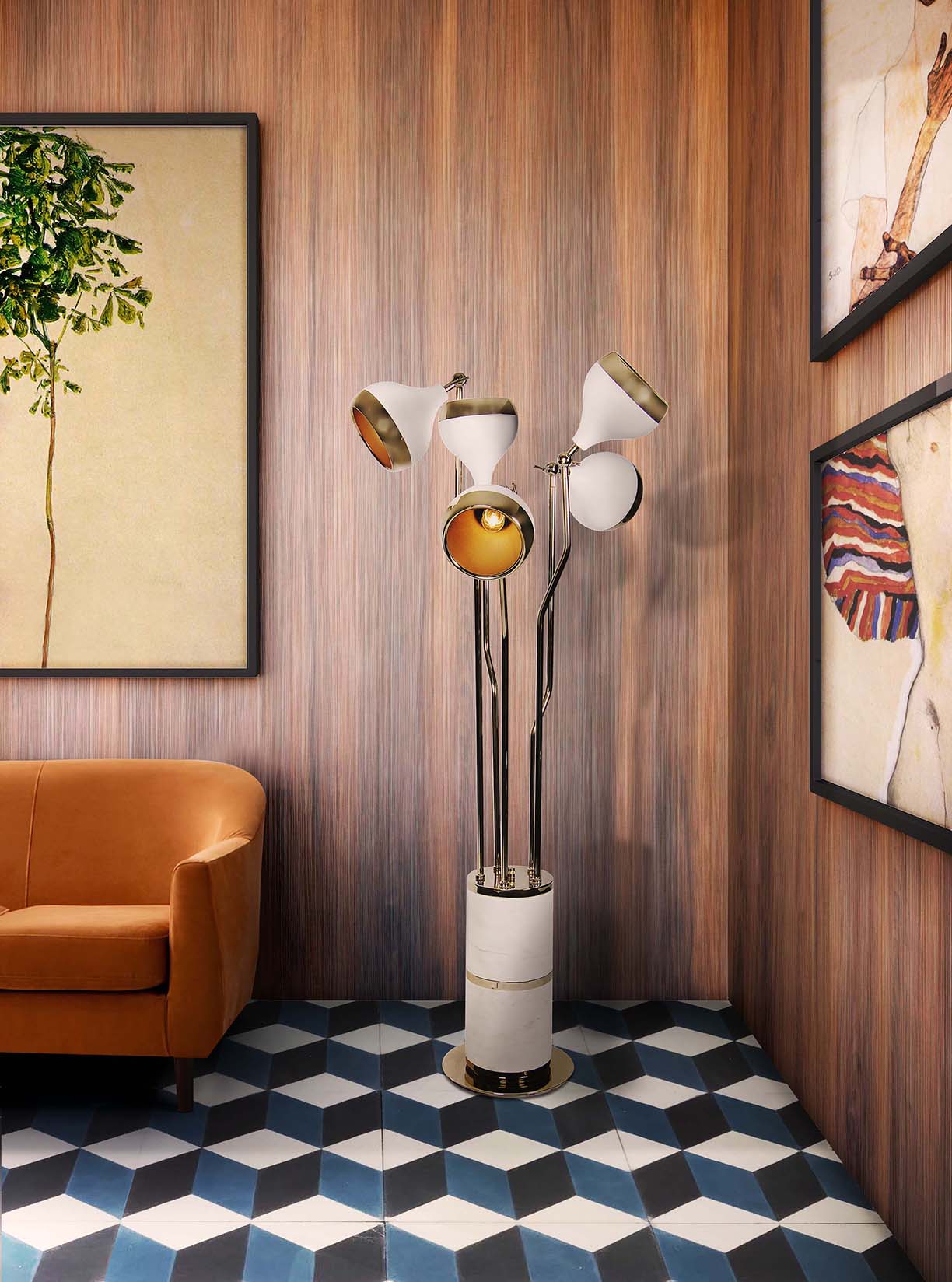
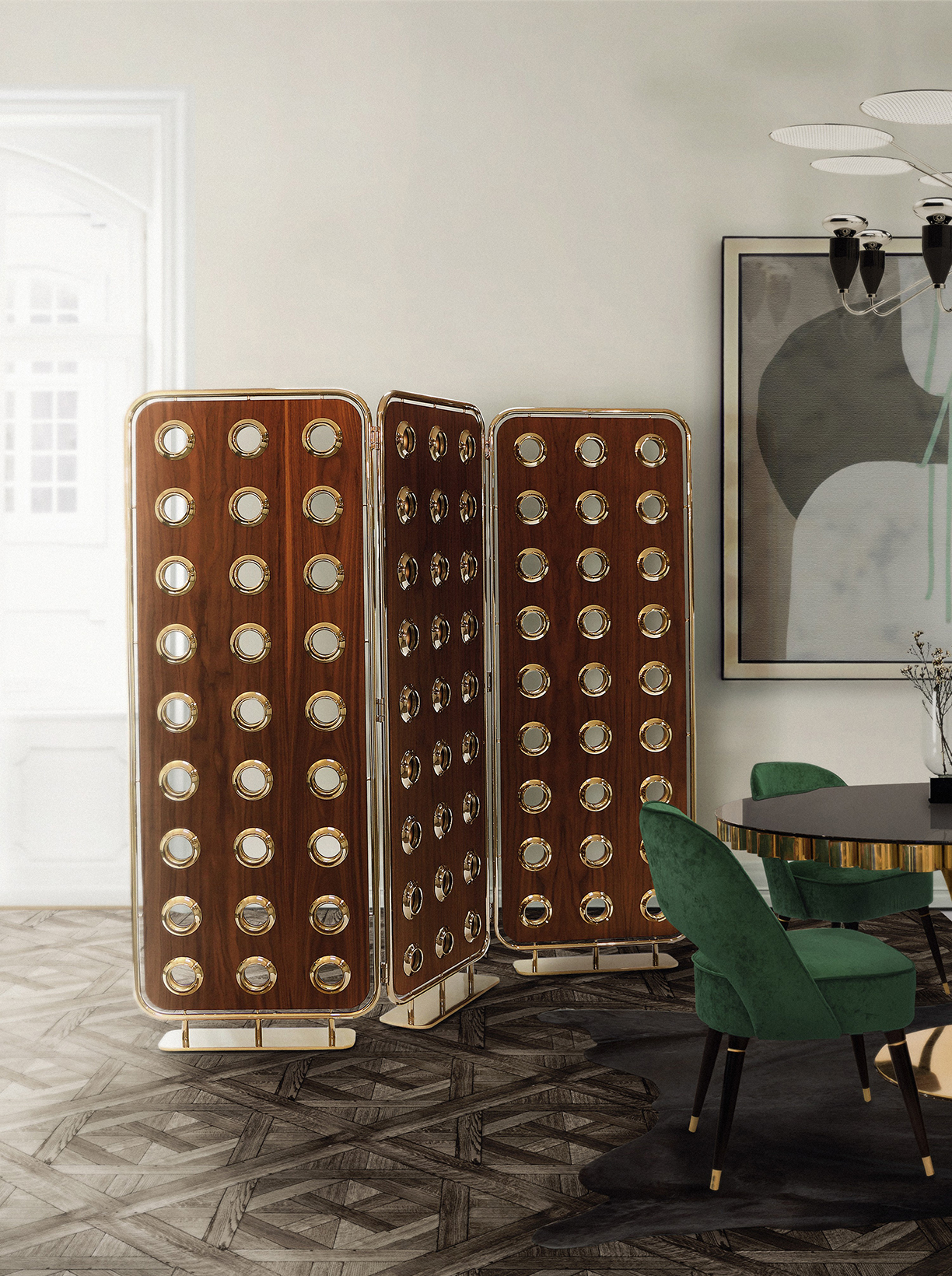
Photo courtesy of DelightFULL
Photo courtesy of Essential Home
Incorporate Brass
Overall, brass contributes to a classical ambiance and can complete the vintage look you’ve been searching for.
A vintage floor lamp will fit perfectly in your mid-century modern living room or vintage retro design hallway. With a structure made in polished Estremoz marble and with multiple lampshades made in brass and aluminum, this floor light is a modern lamp full of grace and charm.
The Monocles Screen is a refined room divider. The folding brass structure holds three walnut panels with brass holes that let you glimpse into the other side. Stylish and functional like no other.
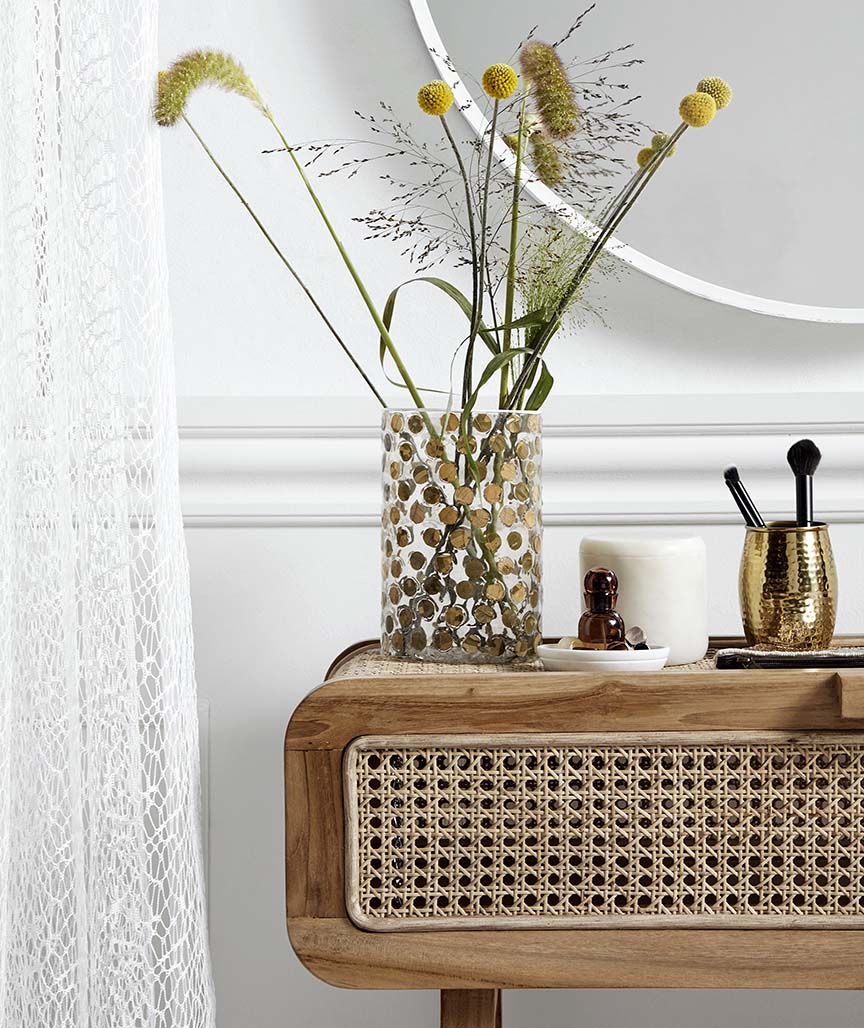
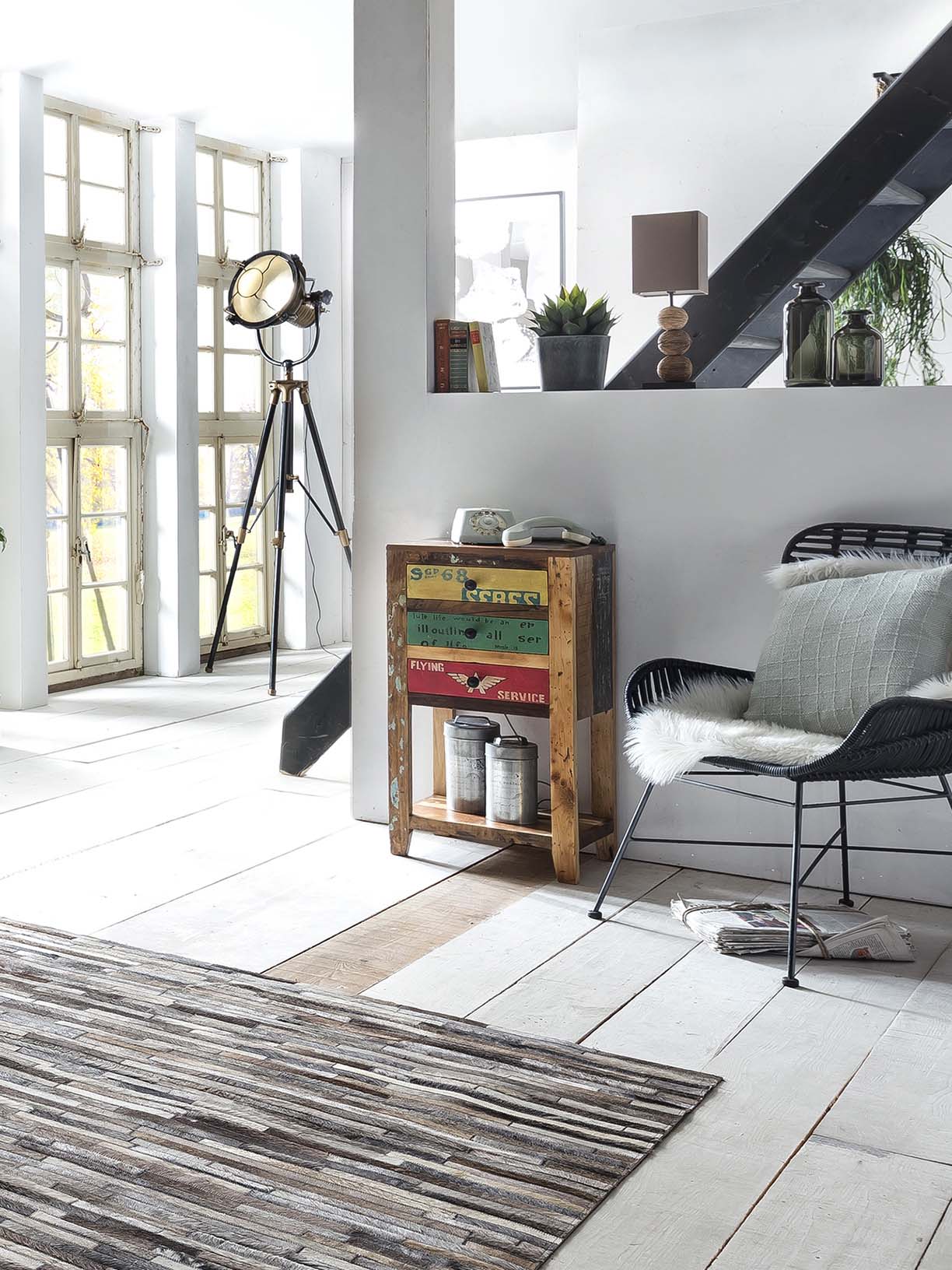
Photo courtesy of The French Bedroom Co
Photo courtesy of Smithers of Stamford
Rattan and Recycled is Retro
This Retro Rattan Console blends craftsmanship and texture with a little bit of artisan vintage into your space. Cane wickerwork and teak framework work perfectly together to reinvent the 70’s furniture trend into a more refined, elegant shape, styled more for modern homes.
Made from solid recycled boat hardwood, the satin hand-painted finish has been added to bring out the beauty of this retro speedway range. It’s retro, unique and a lifetime buy that will never go out of fashion.
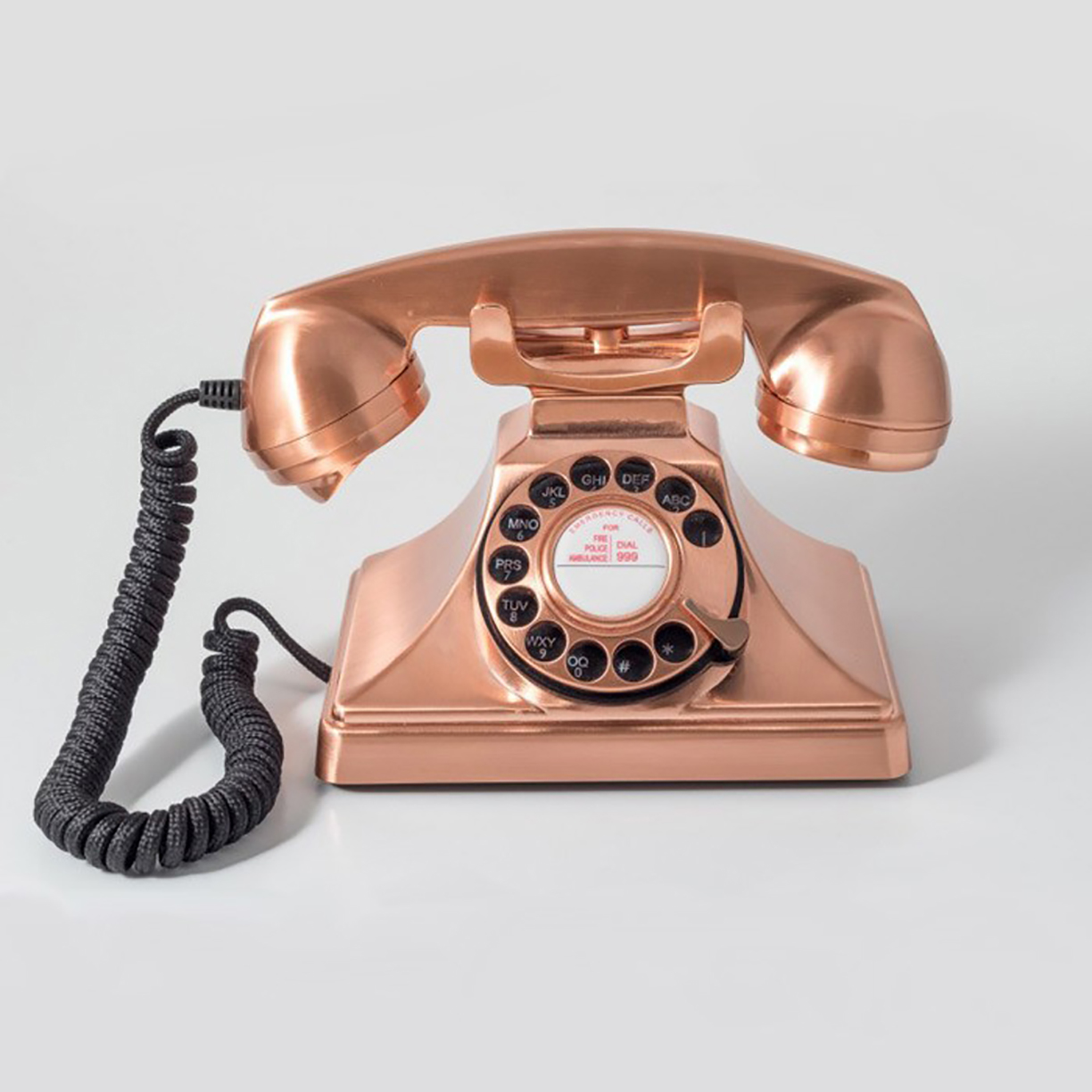
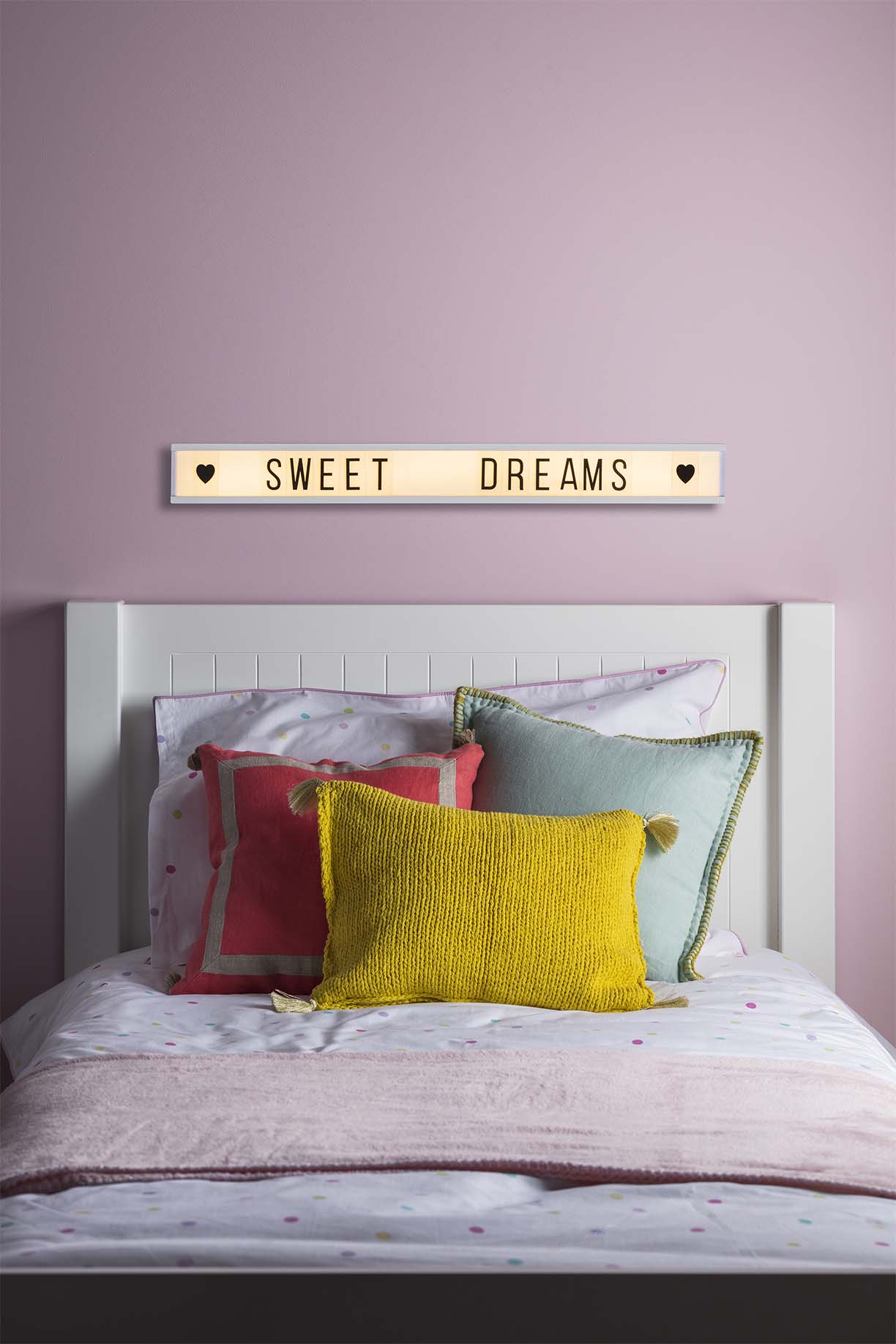
Photo courtesy of Yellow Octopus
Photo courtesy of Lights4fun
Props that aren’t Played Out
The GPO 200 classic, British Rotary Telephone is a one-stop communication portal for all your conversation needs. Touch base with friends and family, then buzz, dial and connect with a classic design of modern technology. Bring a piece of iconic phone technology right back into the present.
Retro Cinema Lightbox is the perfect opportunity to customize your decor. Create a fun message that suits your mood and enjoy the classic element that will elevate your space.
FOR YEARS, NEW TECH COMPANIES HAVE BEEN THOUGHT OF AS THE ‘DISRUPTERS’ IN THE REAL ESTATE INDUSTRY. BUT SAVVY REALTORS ARE POSITIONING THEMSELVES AS THE AGENTS OF CHANGE.
The current market shift from buyers to sellers generates the most attention, but the number of sales and pace of price appreciation are only one swell in the wave of transformation rolling through the real estate industry. Technology is typically hailed as the disrupter, but changing demographics, new lifestyle aspirations and evolving buyer preferences are all at play in today’s real estate landscape.
“If you ask anyone that has been in the business more than 10 years, they say ‘here we go again.’ More paperwork, more platforms, more new companies, more new agents. Yet, ultimately real estate is the same. Our clients require handholding, advice, and moral support, deals get negotiated, and transactions finalize or fall apart. Yes, there are slight shifts in the marketplace, but generally, it still functions the same,” shares Lucio Bernal, a broker associate with Coldwell Banker Residential Brokerage in Palm Springs, who is also an expert trainer with the Institute for Luxury Home Marketing.
What is changing is almost every other aspect of real estate from tools to facilitate broker client relationships to virtual reality apps enabling buyers to envision making a prospective property their own. Increasingly agents are looking to their brokerages to keep pace with technology. “They are leaning on their brokerages, more than ever, to help arm them with tools, from digital marketing to smart, proactive customer relationship management systems (CRMs) that will keep them cutting edge, as well as those they can’t afford to leverage on their own,” says Stephanie Anton, president of Luxury Portfolio International. Additionally, affiliate groups like Luxury Portfolio and major brands have amped up marketing capabilities so agents can easily create a cohesive campaign.
There might be a technology revolution taking place in real estate, but market shifts are reinforcing the importance of the agent. “Technology has always been the present. It’s how you use it that benefits you the most,” shares Bernal. “The perfect example is: If you are dealing with a consumer, they are more likely to use you based on reputation and recognition than whether you know a certain app or technology platform. Technology should be used as a resource and compliment your ability to get face-to-face and maintain contact with a consumer.”
At this time last year, blockchain and the impact of virtual reality and artificial intelligence on real estate were being debated. Today, the chatter is about portals morphing from search engines to places to buy and sell homes, a new classification the industry characterizes as iBuyers. Opendoor, founded in 2013, started the trend, followed by others including Offerpad and Knock. Zillow and Redfin have also introduced iBuying in some markets. iBuyers purchase consumer’s homes outright using analytics that enable them to come up with a price based on the home’s perceived value, usually within days. Unlike homes sought by flippers, these are not troubled properties and offers reportedly are close to the value estimation. Other portals are beefing up offerings for consumers, adding mortgage and title services. Startups such as Purple Bricks offer a new twist on the flat-fee concept.
Investor dollars from venture capital and hedge funds are flowing into real estate, fueling many new ventures, which is another change potentially revamping the industry. “Everyone is investing in technology to disrupt or change real estate,” says Mark Choey, co-founder of Climb Real Estate, a San Francisco brokerage, which was acquired by Realogy’s subsidiary NRT in 2016. The real estate industry is rapidly shifting, and innovation is not just welcome, it’s desperately needed,” said founder Chris Lim, whose background is in marketing. Choey hails from the tech sector. Climb was the first brokerage to work with Matterport and continues to incubate emerging apps and work with new vendors.
ENABLING THE AGENT
Among traditional brokers, Keller Williams and RE/MAX are often noted for new tech initiatives, but almost every brand and national affiliate group is boosting technology offerings and platforms, often through relationships with providers and new tech venders including virtual staging, enhanced CRM and 3D tours and imaging. Technology ultimately benefits consumers, but traditional brands and affiliates say their focus is enabling their agents to do a better job.
“Everything has shifted in many different areas from the brokerage level, the buyer level, who the buyers are, what they are looking for,” says Sally Forster Jones, executive director, Luxury Estates, Compass. “I think there is a shift in the way that brokers are functioning. They are more innovative with more technology and more marketing as opposed to the older traditional real estate firms.
“Consumers care about responsiveness. They care about the fact that if they reach out to an agent, whether it be on their website or mobile app the agents gets back to them instantly, and technology can help with that,” says Marilyn Wilson, founding partner of real estate consultants WAV Group and also a founder of RETechnology.com.
“Technology has always been the present. It’s how you use it that benefits you the most. The perfect example is: If you are dealing with a consumer, they are more likely to use you based on reputation and recognition than whether you know a certain app or technology platform. Technology should be used as a resource and compliment your ability to get face-to-face and maintain contact with a consumer.”
Tapped by Google to create a virtual staging app using augmented reality, Sotheby’s added Curate to agent toolboxes last year. Not only can a homeowner visualize a home before buying, but a partnership with a home furnishings company allows potential buyers to virtually furnish the home as well.
“A depth of understanding of what a property has is really important to consumers. The other thing that consumers are responding to online are floorplans,” says Wilson.

GETTING REAL WITH VIRTUAL
In the last year, GeoVC, a tech start-up offering 3D immersive tours and floorplans that can be created using next generation smartphones, integrated virtual staging, exterior 3D scans, and aerial 360-degree panoramas captured with a drone with interior 3D tours. “Outdoor imagery is captured using a regular drone, automatically processed into a 3D model, and integrated together with interior virtual tour. Such an exclusive experience will differentiate luxury properties with beautiful facades and roofs, and spacious lots,” shares Anton Yakubenko, co-founder and CEO of GeoCV.
“Luxury has really turned into personalization now,” comments Thompson. Tools like Curate, RoOomy and virtual staging apps enhance opportunities for personalization. Thompson explains: “Someone can walk into a home and say, ‘not my style,’ but it doesn’t matter because I have the tools that allow me to make it feel like what I want it to be.”
Even Compass, which touts itself as “The first modern real estate platform, paring the
industry’s top talent with technology,” says technology is there to benefit the agent. “Compass is building for the agent. Every program, tool, and service is (created) with the agent in mind. Many of the other real estate technology companies out there are working to improve the consumer experience and not focusing on the agent. We believe that by empowering the agent, consumer experience will be improved,” says Sarah Vallarino, head of West Region Communications at Compass.
“Talking to agents, the message we consistently heard was ‘give us technology,’” says Thompson. “They didn’t necessarily know what that technology was just that they needed it. They understood that the industry was changing, and consumer behavior was changing. They know because they’re the boots on the ground and so they can feel the shift in consumer behavior.”
As markets shift, agents are retooling, once again looking at how they do business and what skills and knowledge will be required. “It’s always either somewhat of a buyer’s market. It’s somewhat of a seller’s market. You just have to have your tools in your tool shed and the mindset to be nimble enough to adjust as you read the tealeaves, ” is Wilson’s suggestion.
“Luxury has really turned into personalization now,” comments Thompson. Tools like Curate, Ro0my and virtual staging apps enhance opportunities for personalization. Thompson explains: “Someone can walk into a home and say ‘not my style,’ but it doesn’t matter to me because I have the tools that allow me to make it feel like what I want it to be.”
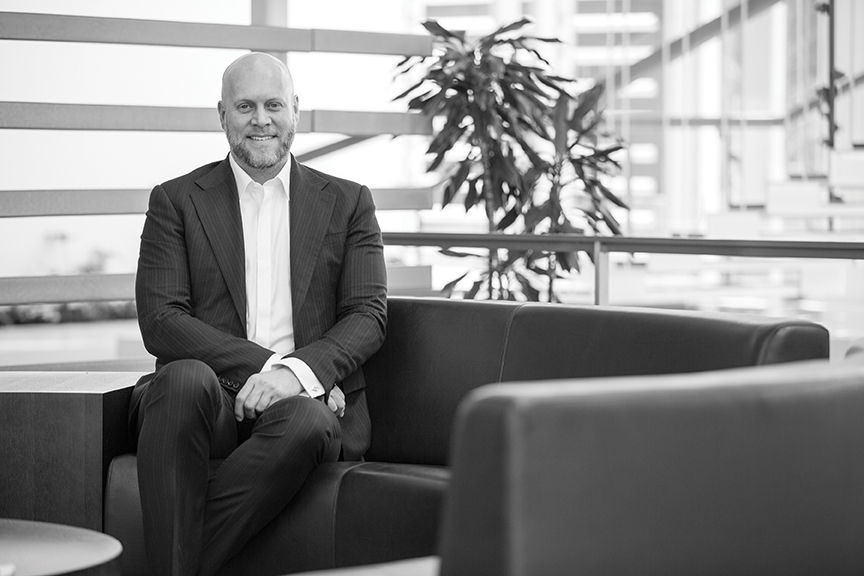
AGENT PIVOTS
“Many long-time successful agents are being the clever, resourceful entrepreneurs that they are and changing with the market as the market shifts,” says Anton. “Agents today talk about how much of their time and value derives from being an educator for their clients. They partner with their clients to keep them armed with as much information, insights and insider activity as they can, so when it comes time, for example, for an agent to recommend a price reduction, the client is completely aware of the statistics, days on market, what is moving and what isn’t. Nobody wants to have an overpriced home that is sitting and not selling even in a hot market.”
“Today, clients will attempt to collect their information on their own, perhaps from incorrect sources, so agents report pivoting, now more than ever, to spend a lot of their time educating their clients,” she says.
Regarding slowing sales or price appreciation, Anton says: “I highly recommend agents tell the truth, focus on educating their following/clients, and in the process, let their own voice be heard and be themselves. If the market is cooling, share the stats and manage expectations. It’s not the time to be overly positive and cheery as you will come off inauthentic and salesy. Focus on the facts, insights and provide professional guidance.”
“Agents have to stay on top of what is available to them and the consumer. It is imperative to be able to explain the data, to have polished negotiation skills, and to know when to assist the consumer in processing that information,” says Bernal.
“Agents should take full advantage of all the resources that the brands they work with provide. The majority of agents won’t, and that has never changed. Those that want an edge in the industry recognize that there is value in resources and take advantage of some of them. For most agents, resources are overwhelming, and therefore don’t take the time to learn and use them,” says Bernal.
Thompson recalls, “We had to dig in and find out what exactly is it that they (agents) need that will make a difference for them in their day-to-day because they think, you know, there are lots of real estate brands that tout themselves as technology companies, but they really don’t have anything really different.”
“Everything has shifted in many different areas from the brokerage level, the buyer level, who the buyers are, what they are looking for. I think there is a shift in the way that brokers are functioning. They are more innovative with more technology and more marketing as opposed to the older traditional real estate firms.”
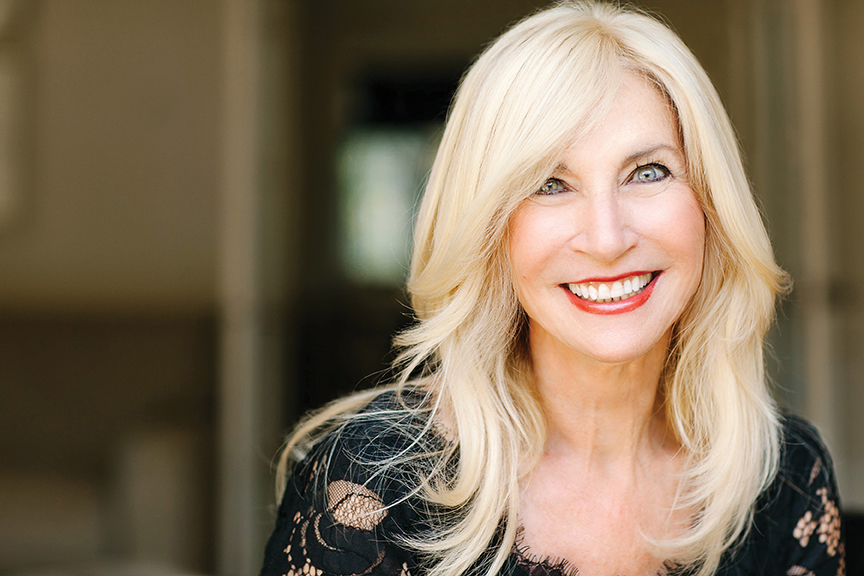
EYE ON THE FUTURE
Mark Choey from Climb says, “I think you’re going to see a lot of change in the next year or two,” most likely from many directions. Choey is head of Climb’s Innovation Lab. Having an innovation lab, particularly for a small company, is in itself an innovation. “You’re going to have some business models that are going to evolve, like Opendoor and Knock, that are really going to change the way people buy and sell homes, but it’s not gonna change everything, right. You’re going to have Redfin, Zillow and others come out with tools and things that are going to attempt to either reduce the commission or to simplify to transaction. On the other hand,” he says, “you’re going to see traditional real estate firms arming themselves with technology.”
And while some tout themselves as technology companies, Thompson doesn’t see traditional and technology as being mutually exclusive terms. “You don’t have to be one or the other. People think of Sotheby’s as a heritage brand because we’re been around for close to 300 years now. But a heritage brand can also be tech savvy. It doesn’t have to be one or the other.”
Looking ahead, Bernal says, “The real estate industry has to take both a broad look and a hyper-local look at where the marketplace is based on data and individual perspectives. We say that real estate is local, yet there are many determining factors that create a web of interconnected behaviors throughout the world of real estate.”
Consider Los Angeles, Manhattan and Miami, where the impact of fewer international buyers extends beyond sales and prices. Post-recession, international buyers became a market force determining what was being developed, locations and price points. On the West Coast, view properties and contemporary architecture were particularly favored by Asian buyers, and new builds were often geared to these buyers. Now many L.A. buyers, particularly in higher price points, are local or hail from the U.S. and have different expectations of luxury with walkable locations and neighborhoods taking precedence over views. “That’s a shift and it will continue to be a shift because we have a lot of properties coming on the market geared toward that international buyer,” says Jones.
The desire for the ability to walk to shops and restaurants is happening across all price points, according to Jones, and these new preferences are not limited to L.A. Walkability has been associated with urban settings, but increasingly this characteristic is being applied to suburbs, towns and master-planned communities.
Traffic and gridlock also add to new preferences for locations. In the not too distant future, traffic itself may be seen as even more of a disruptor than it is now, changing where people live and property types.
Photo of Lucio Bernal by Cherie Johnson for Moncherie Fotography. Photo of Sally Forster Jones by Lauren Hurt. Photo of Kevin Thompson courtesy of Sotheby’s International Realty.
The attendee of a modern upscale event expects more than a standard plate of meat, potatoes and vegetables. This year’s catering trends address the demand for a more exciting, sustainable and updated take on the culinary soundtrack to an elegant event. With an ever-growing selection of vegan fare, an emphasis on locally sourced ingredients and the visual appeal of station-based catering, partygoers have more choices than ever when it comes to fine dining.
Whether it be for health or other reasons, many have recently chosen to restrict their diets to avoid animal products. Caterers have not missed a beat in having options for the growing vegan population, and have also created custom menus for diners with other dietary restrictions. While an all-vegan menu may be perceived as a hurdle for a host concerned about the satisfaction of non-vegan guests, hearty vegetable-centered entrees like roasted eggplant have become popular solutions that please all guests.
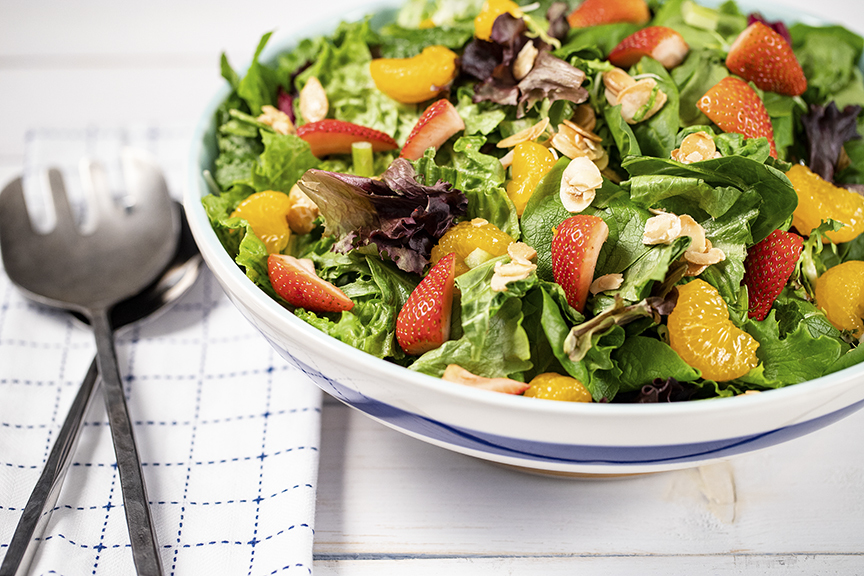
Guests have an array of vibrant vegan options to choose from.

Veganism is not the only movement to emerge from growing concerns about healthy and sustainable food; providing locally sourced foods is critical to the environmentally friendly host. In 2019, caterers showcase their local sources of produce, meat and dairy products to appeal to guests striving to limit their consumption of food that requires ecologically costly transportation to arrive on their plate.
While it has long been known that we eat with our eyes, trendy showstopping presentations are relatively new to the catering scene. Engaging and interactive stations with visually appealing options are beginning to bridge the gap between food and entertainment at events.

Left: Flame-seared steak is prepared live in front of guests. Right: Molecular cocktails add an innovative twist to catered beverages.
The Chicago-based company Catering By Michaels presents custom stations where foods like ramen or flame-grilled steak are prepared in front of the consumer. These awe-inspiring showcases of elegant cooking elevate the experience for guests at high-end gatherings. Catering By Michaels has found that stations are the perfect way to wow a crowd looking for a diverse array of options, each with its own charming twist.
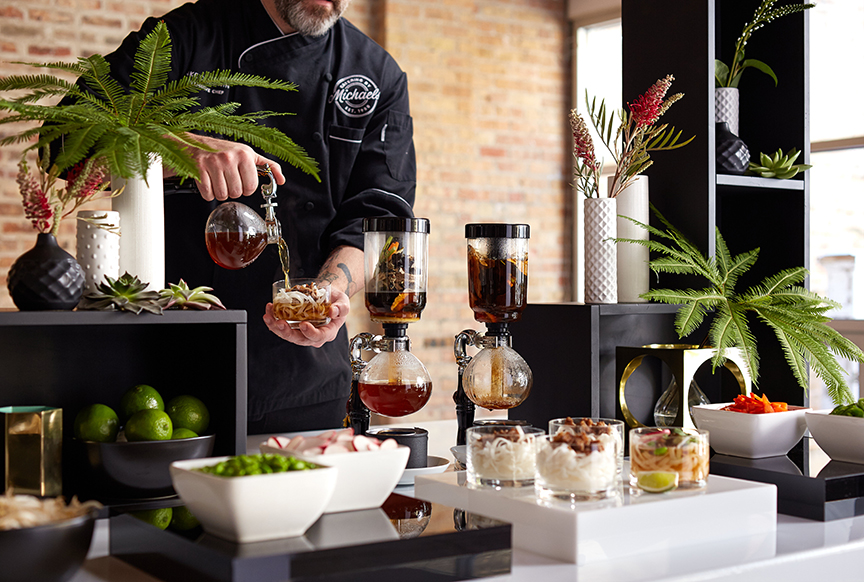
Catering By Michaels’ unique Ramen Station.
Photos courtesy of Catering By Michaels.
Usually, it’s possible to sum up the outlook with a pithy phrase, but this year the luxury landscape is nuanced. Some markets sizzle; others simmer. Dynamic outside forces are at play and will potentially exert even more influence in 2019. In the background, the words recession and bubble are whispered, but most experts don’t see either in the cards, particularly for residential real estate in 2019.
“In most markets, I think it’s a case of ‘from great to good,’” says Stephanie Anton, president of Luxury Portfolio International.
“We’ve left a crazy market, and we’re moving into a more normal market,” shares John Brian Losh, chairman of Who’s Who in Luxury Real Estate. “We are beginning to see a more normalized market where supply is more equal to demand. Even in the luxury market, there are fewer bidding situations.”
According to Redfin, the number of competitive offers fell from 45 percent to 32 percent in 2018. Still, some ZIP codes in busy markets such as Boston, Washington, D.C., and the Bay Area remain hotbeds of competition, with the number of multi-bid scenarios increasing in the third quarter.

© istockphoto.com/JZHUK
Concerns about potential bubbles continue to percolate, but economists and other experts caution that fundamentals are strong and for real estate the next downturn will be different. “The recent tax reform and increased government spending have been a shot in the arm of the U.S. economy,” Tim Wang, head of investment research at Clarion Partners, explained to journalists at the Urban Land Institute’s fall conference. Wang and other experts expect the current expansion of the economy to continue through 2019, tapering to 2.5 percent next year.
“The housing market is following the trend in the overall economy, which needs to be noted because housing led the last downturn,” comments Marci Rossell, chief economist for Leading Real Estate Companies of the World, citing politics and global uncertainty as factors affecting real estate. This time, she says, “the casualties will be a little bit different, and because of that I don’t anticipate a meltdown.”
A cooling period is how Craig Hogan, vice president of luxury at Coldwell Banker Real Estate, characterizes the luxury climate, particularly in the second half of 2018. It’s a change Coldwell Banker has anticipated. “For any of us to think it was always going to be incredible is a little naive. The market is always going to fluctuate.” Hogan says it’s important not to interpret cooling as a market decline. “Cooling is a normal fluctuation, while a decline happens when the value of homes begins dipping.”
“There hasn’t been any great price suppression. Houses are staying on the market a little longer, but demand is still healthy,” says Losh.
“I think we’re still going to have a very strong year overall. I do believe we’re seeing price adjustments, and that’s okay. I think the key is watching how long properties are staying on the market and watching the size of the price adjustments,” observes Lesli Akers, president of Keller Williams Luxury International.
The average sales price for Sotheby’s transactions is up year over year. “From a luxury point of view, many of our companies are having a record year,” says Philip White, president and CEO of Sotheby’s International Realty. “Revenues are up, and in some cases pretty significantly,” he shares, noting that this number also reflects significant recruiting and/or acquisitions by some companies.
Recent stats show prices for upscale properties still increasing, but at a slower pace than past years. The number of sales in many places has dipped, but that differs by location, and in more than a few instances sales still exceed 2017.
Data from the Institute for Luxury Home Marketing (ILHM) shows median prices for single family luxury homes climbing 8.5 percent in November over October, while the number of sales fell 11.7 percent. For attached luxury properties, sales rose 2.6 percent with a 2.3 percent hike in prices.
Putting the current market for real estate overall into perspective, Lawrence Yun, chief economist for the National Association of Realtors, said, “2017 was the best year for home sales in 10 years, and 2018 is only down 1.5 percent year to date. Statistically, it is a mild twinge in the data and a very mild adjustment compared to the long-term growth we’ve been experiencing over the past few years.” Yun and other housing economists are quick to point out that new construction still hasn’t caught up with demand and foreclosure levels are at historic lows, factors which make the current climate different than the run up to the recession. NAR’s forecast calls for an overall price increase of about 3 percent in 2019 while the number of sales flattens or edges up very slightly.
Tale of Two Markets
Luxury’s story is a little different. “This year the luxury market has been a tale of two markets, for sure. Some areas are struggling, but most have been stronger than many realize, particularly in the first half of the year. As median prices have been slowing (and getting lots of media attention), the top 5 percent of many major metro markets nationally have been growing, with sales over $1 million up over 5 percent year over year and prices breaking records, in some cases by double digits. In the majority of markets, inventory has been selling faster. This is happening simply because of the health of the affluent,” observes Anton.
What sets this year’s outlook apart is that some places are having a strong, dynamic market, while others are seeing a softening, often only in specific price brackets. “The slowdown that started on the East Coast is having some effect on the West Coast. But it’s not a typical slowdown,” says Mike Leipart, managing partner of new development at The Agency. “Good product that has relative value is continuing to transact.”
The top three sales nationally in the third quarter, each over $30 million, occurred in Laguna, and seven out of the top 10 were in Southern California.
Rather than a general market malaise, Leipart characterizes the slowdown as more of a spec home problem. “It’s just too much has been built too fast, and not all of it is very good. The people who thought they could build a house for $15 million and sell it for $30 million are struggling.”
The higher price points in L.A. may see an even stronger downturn in the near future, suggests Bob Hurtwitz, owner of Hurwitz James Company, who typically works in the very high end. “There is a lot of inventory on the higher end, and luxury home buyers are usually in a position to wait and see. The drops in price are a lot more dramatic on property at $15 million and above, and buyers are aware of the benefit in waiting to see how it plays out. At the ultra-high end of $100 million or more, you are going to see and already are seeing huge reductions in price.” What’s hot in L.A.? Luxury penthouses in full 24-hour security buildings in prime areas, according to Hurwitz. “High-end penthouses will continue to be in-demand from foreign buyers purchasing as a part time home or for housing for their children.” Other price brackets, notably the $1.5-million to $3.5-million range, are busy, and, Hurwitz says, his agents are doing a lot of deals.
Perceptions of prices in Manhattan can be skewed, since recent closings are often for new construction for which contracts (and prices) were written a couple of years prior. Even though stats show sales decreasing, Ellie Johnson, president of Berkshire Hathaway HomeServices New York Properties, says, “There is still a healthy but steady group of buyers that are still out there in the high-end luxury landscape.” Additionally, New York is particularly keyed to Wall Street, and volatility in the stock market often means more money gets transferred into brick and mortar. “We’ve seen an uptick that we didn’t have at the beginning of the fall season,” Johnson observes. Despite a less than stellar real estate market at year end, New York remains a global gateway and the top city for global wealth.

Manhattan
© istockphoto.com/CreativeImages1900

Los Angeles
© istockphoto.com/SeanPavonePhoto

St. Petersburg
© istockphoto.com/SeanPavonePhoto
In other locations, particularly those with lower prices for upscale properties compared to California, Florida or New York, reports show strong interest and price growth. An acre in one of Atlanta’s prime addresses in Buckhead can demand as much as $1 million. It’s just one indication that luxury here continues to reach new price levels with considerable demand coming from outside the region, including buyers from California and Florida. Some relocate simply because they want a home in the city; others follow corporate moves. The city has also become a favorite for the film industry, which has become a $4 million industry. “It’s changing everything about this city,” says Debra Johnston with Berkshire Hathaway HomeServices Georgia Properties. Luxury really doesn’t begin until the $5 million threshold, says Johnston, but prices compared to Florida and California are reasonable.
At one time, it was thought it might take more than 20 years for Florida real estate to recoup from the recession. In October, the state tracked 82 consecutive months of price hikes for both single-family and condo-townhouse properties, with many cities showing double-digit increases in the number of sales. “The overall market in Florida, particularly higher-end areas such as Sarasota, Naples and Palm Beach, is definitely strong and stable. Maybe not as robust as say 2013 and 2014, but we haven’t had any major slide — except the economists talking about the market slowing down,” says Pam Charron with Berkshire Hathaway HomeServices Florida Realty in Sarasota.
“The St. Petersburg market seems to be performing differently than other Florida markets and other national trends,” observes Tami Simms with Coastal Properties Group, noting November sales skyrocketed over the prior year. “We have developed into a year-round market with luxury downtown condominiums in high steady demand.” Another sign of consumer confidence is lack of defaults on pre-construction sales. “When we experienced the crash, those buildings that had been sold out prior to completion experienced a significant number of defaults. We see none of that in this instance.”
Florida is one of several states including Texas and Nevada benefiting from changes in tax law. Tax changes not only force some to reevaluate where they live, but they also impact the margins of price brackets. “While it doesn’t mean people wholesale leave New York or San Francisco, marginal changes tickle up and trickle down to the next closest price level,” and it will take several years for that to be felt, says Rossell.
The New Market
“So many trends have taken place they are no longer trends, they are the new market,” observes Hogan, using new construction as one example. “It doesn’t matter where you go or who you talk to, new construction is part of the conversation.”
Global demographics will have a long-term impact. “What luxury is adjusting to is a different demographic worldwide. Those aging baby boomers are kind of done with big homes and the following demographic is 50-percent smaller,” Rossell says.
Changing demographics affect location and property type. “I think we’ll see increased demand for primary residences in traditional second home and resort markets. We are seeing this trend in select markets, as individuals who have the freedom to work remotely are opting to live in places where they feel their quality of life will be the best,” observes Anthony Hitt, president and CEO, Engel & Völkers Americas.
Summer 2019 will mark the most prolonged economic recovery since World War II, but wild cards including interest rates, a trade war and further instability could easily derail this expectation. However, there is a silver lining to the current market. Increasing inventories will bring some buyers back to the market and create more demand. “I think it’s going to a be a great opportunity. People will buy things that they haven’t considered, and they’re going to buy more of them. I think that’s been a big challenge. We’ve not had the inventory, and a lot of buyers kind of just fell out of the market because they didn’t feel like there really was one,” explains Akers.
ILHM President Diane Hartley believes 2019 will be a year of opportunity for both buyers and sellers provided they remain agile, innovative and adaptable to their local market influence.
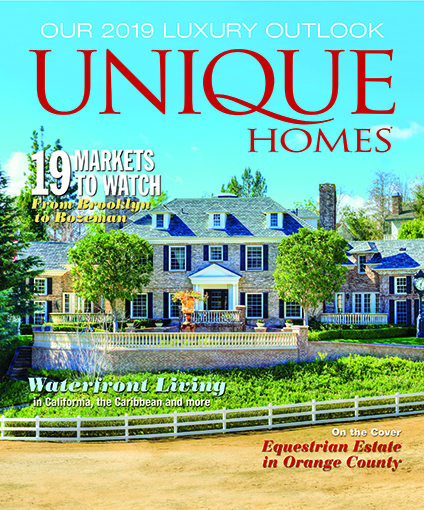
This story originally appeared in the Winter 2019 edition of Unique Homes Magazine.
Gather around the fireplace and embrace the comfort of warmth and fresh designs with these fireplace trends.
The fireplace is so much more than an accent today. A crackling fire has become a central point of design in some rooms, a conversation starter, and a gathering place within the home. Transform your home with these stylish and modern trends.
Don’t Be a Square
There are endless opportunities for creativity when it comes to fireplaces. The time for traditional fireplaces that are built of bricks and right angles is officially over. Embrace the variety of shapes to choose from, including round fireplaces. This stunning circular fireplace is eye-catching and adds to the warm and inviting atmosphere. The placement, color, and overall style produces an unforgettable element in this space.
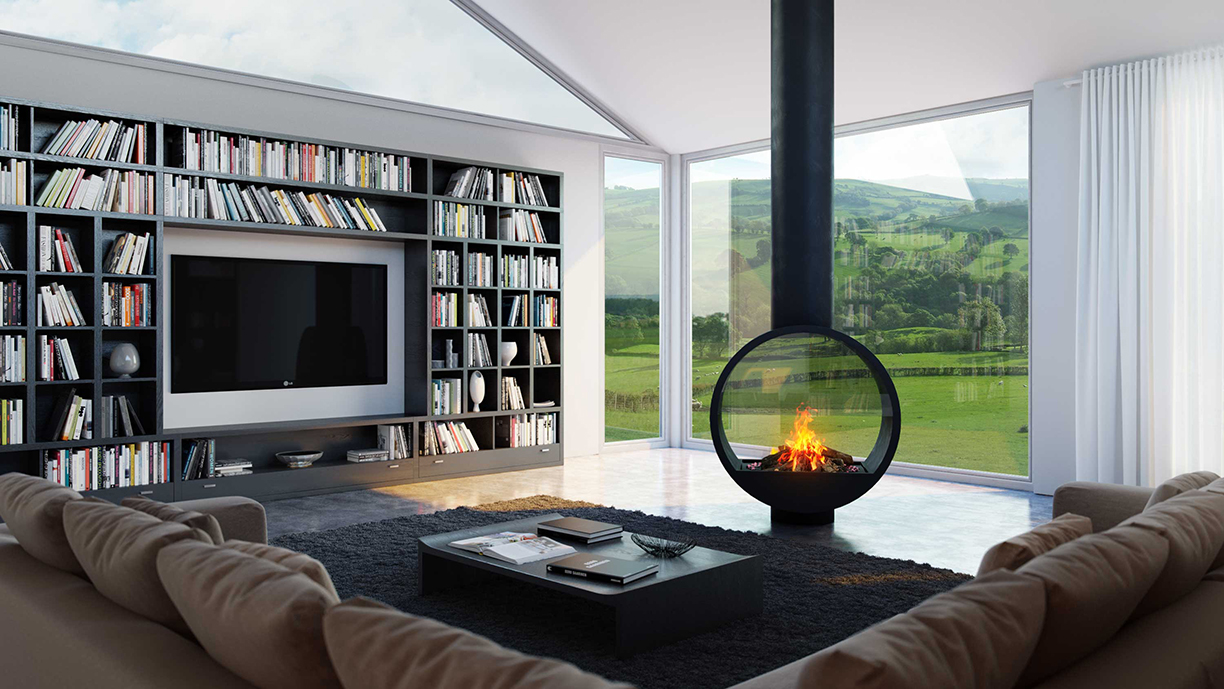
Divide Your Space
A dividing wall or partial wall is the perfect place for a fireplace. Adding a component like this simultaneously separates the rooms and brings it together. The coziness of the fireplace easily spreads to both areas. This trend is also the answer for those struggling to spice up an otherwise bland dividing wall. Avoid overwhelming the space by keeping the fireplace low to the ground and subtle.
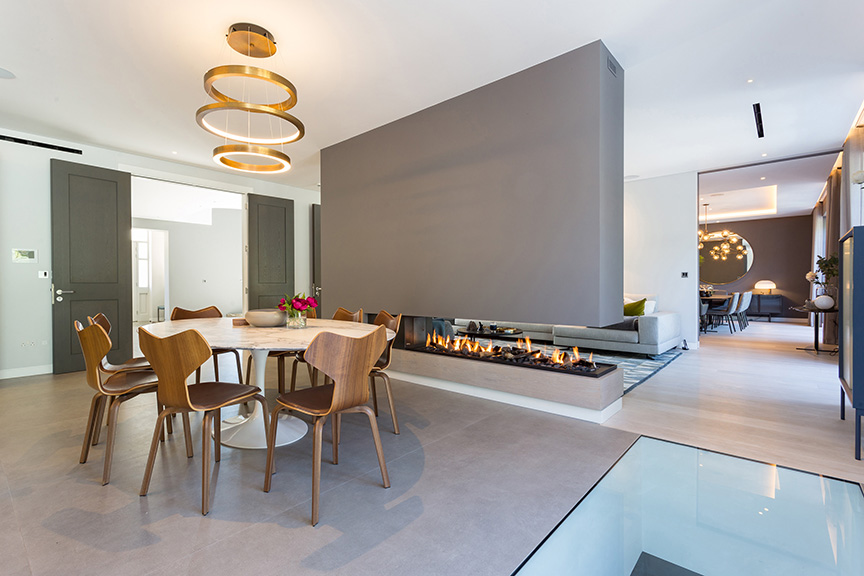
Make it a Focal Point
A fireplace doesn’t have to blend in to be functional and beautiful. Whether guests are settling down for a movie night or assembling with some wine and good conversation, it is increasingly popular to make your fireplace the central point in a room. This type of fireplace will not only attract guests but is bound to start a conversation. Is there anything more relaxing than an afternoon around the fire? Don’t be afraid to make your fireplace really stand out!
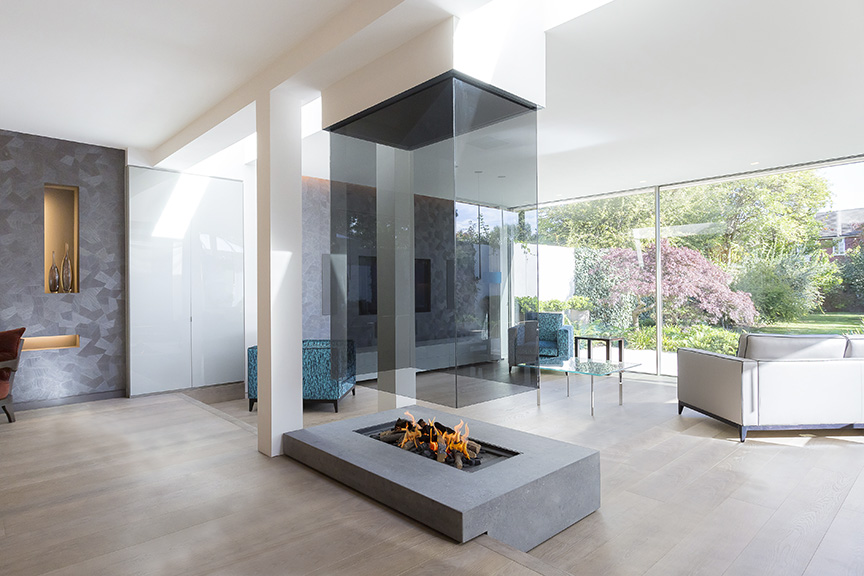
A Subtle Spark
If your fireplace isn’t a large part of your space for most of the year, then a subtle addition can be as equally appealing. A smaller element that is close to the ground could be the perfect touch of warmth that you’re craving. This design is grand without overpowering the space.
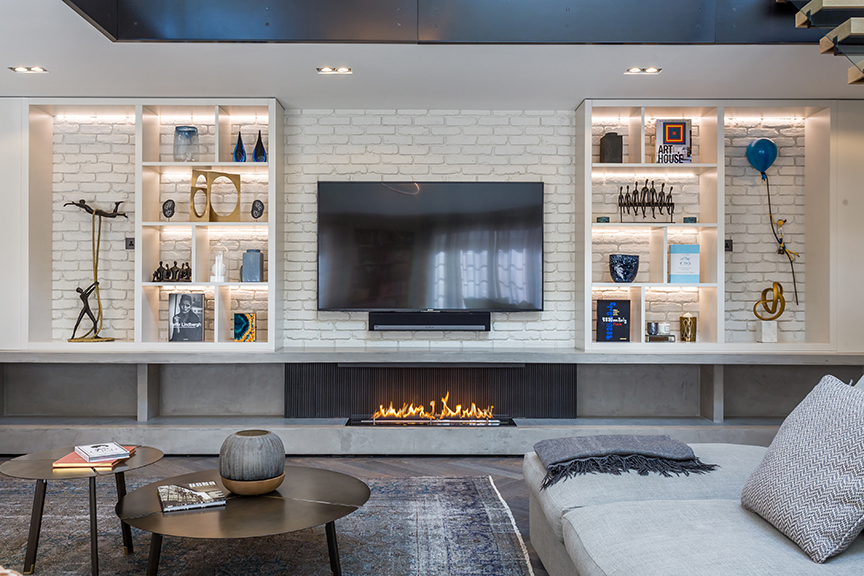
Visit https://modusfireplaces.com/ for more of their luxury fireplace collection!
Photos courtesy of Modus Fireplaces
As we enter 2019, here are four interior design trends to watch, according to today’s top interior designers as told through Ketra.
Technology Brings Another Dimension
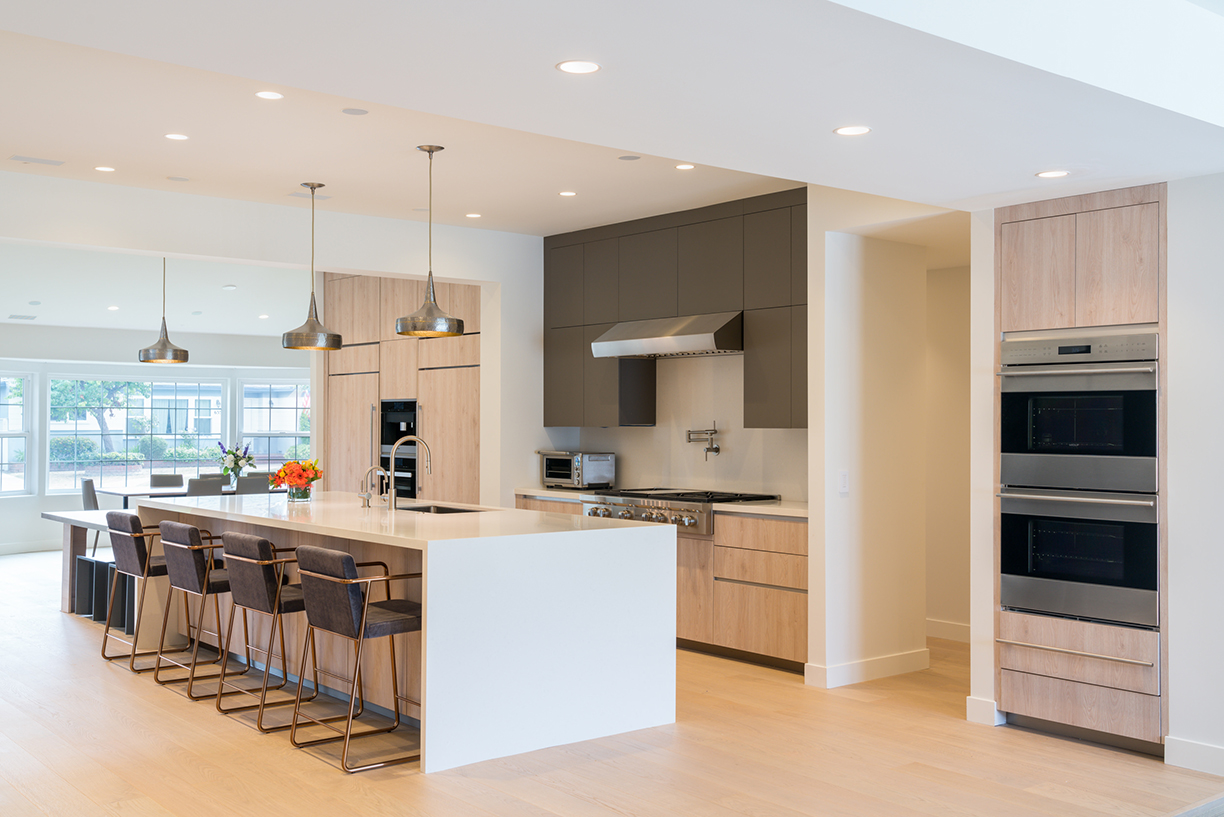
photo by Ketra
In 2019, smart home technology will be a must — whether it’s remote lighting control, window shades built for energy savings, or full-home voice automation.
“One of the major advantages to tech and connectivity in the home is the ability to manage the property remotely, with doorbells now doubling as security cameras, wireless thermostats that can be preset or adjusted while away, or programmable lighting and window shades for energy savings and to make it appear that people are in the home,” explains Erin Ruby, founder of Erin Ruby Design, LLC.
“Technology always has something new that peaks a client’s interest,” adds Rendell Fernandez, design director at Pembrooke & Ives. “Voice actuated smart speakers now add another layer of home automation controls that were non-existent just a few months ago.”
Investments in Meaningful Furnishings
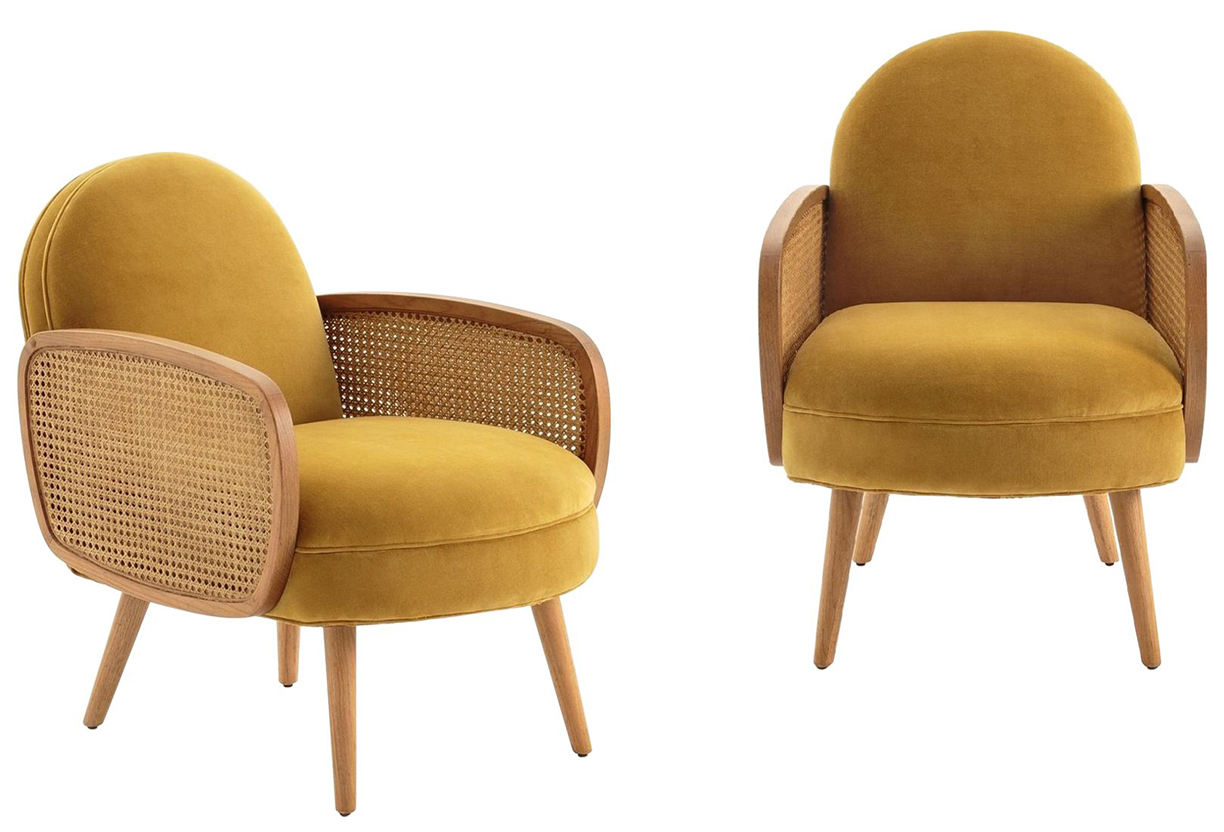
In 2019, there will be a greater value in selecting quality products. “In response to the culture of fast furniture and disposable pieces purchased solely for convenience, more and more manufacturers are offering quality products in reasonable lead times,” Ruby says.
“Even IKEA is making fine crafted products now! Businesses are seeing the value of investing in meaningful pieces, be it furniture, artwork, or lighting, to elevate the experience within their space and offer a more thoughtful representation of their culture and brand.”
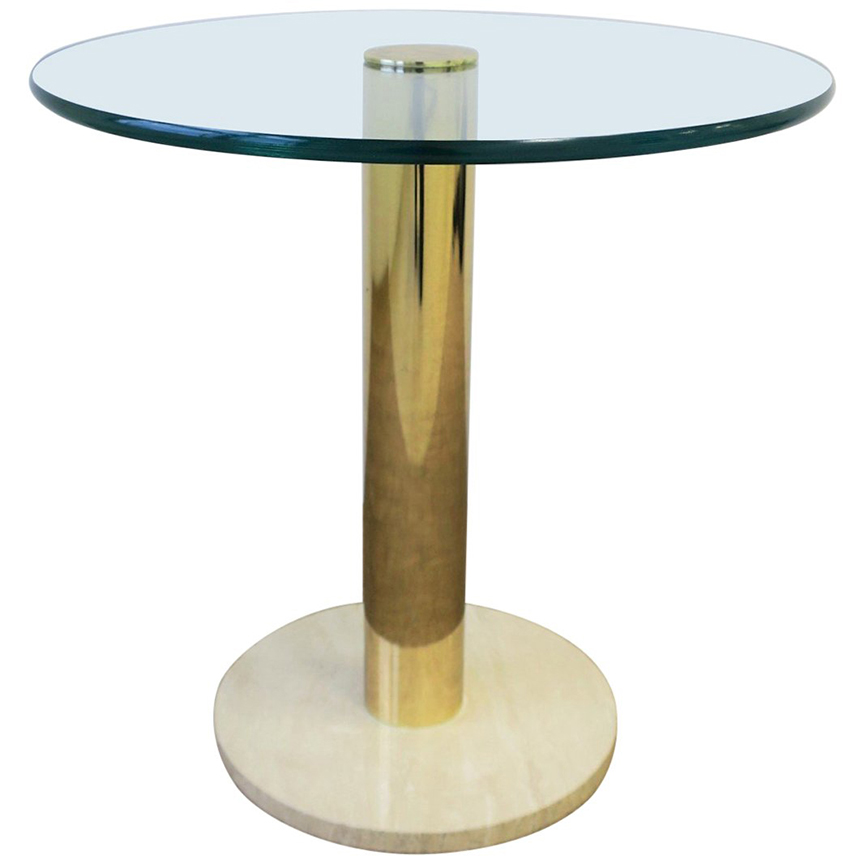
photos by 1stdibs
Neutral Hues are the Best Canvas
According to the team at Pavarini Design, 2019 will bring about neutrals grays and pale pastels that contrast early ’80s varieties of pale plums, pomegranates, and violets contrasting dark charcoals.
Benjamin Moore recently announced the Color of the Year 2019 — Metropolitan AF-690, a stylish gray with cool undertones, reinforcing that neutrals are in.
While most colors are driven by client preferences that illustrate the diversity of the full color spectrum, Fernandez agrees that the designers at Pembrooke & Ives stay true to neutral tones and natural finishes.

Photo by Benjamin Moore
Lights that Mimics of the Natural Spectrum of Sunlight
Natural light is a key element to think about when designing a space. “It’s our connection to nature and makes us feel good,” says Charles Pavarini III and J. Randall Tarasuk of Pavarini Design. “The ability to amplify the natural spectrum of light coming through your windows is something we have never had the ability to do before. It’s a breakthrough that is sure to find a growing market.”
“As the quality of lighting technology improves and evolves, this will continue to be an increasingly vital aspect of the built environment,” Ruby agrees. “Any space is only as good as it’s lighting. Lighting dictates how spaces are perceived — warm and inviting, or cold and stark.”
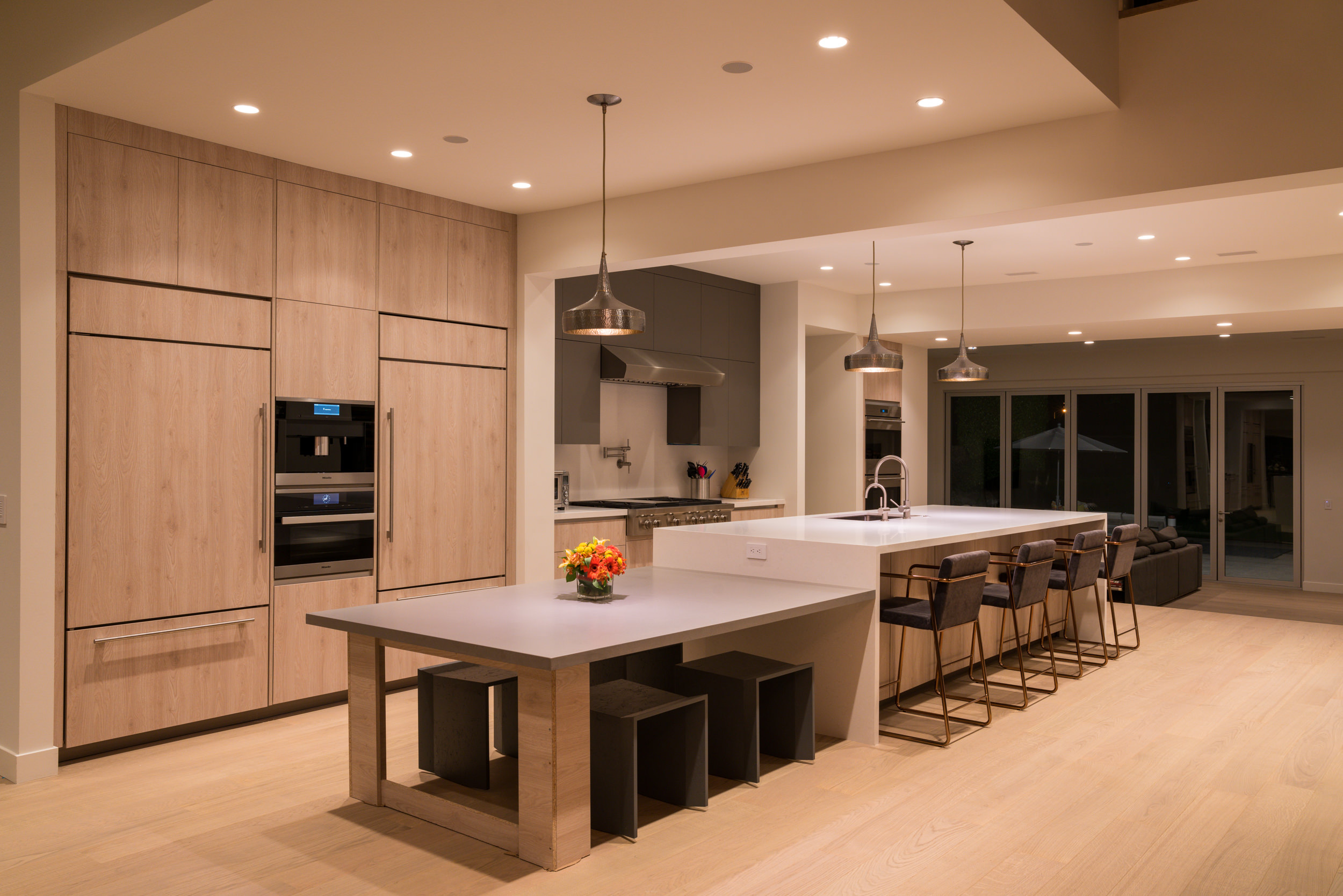
photo by Ketra
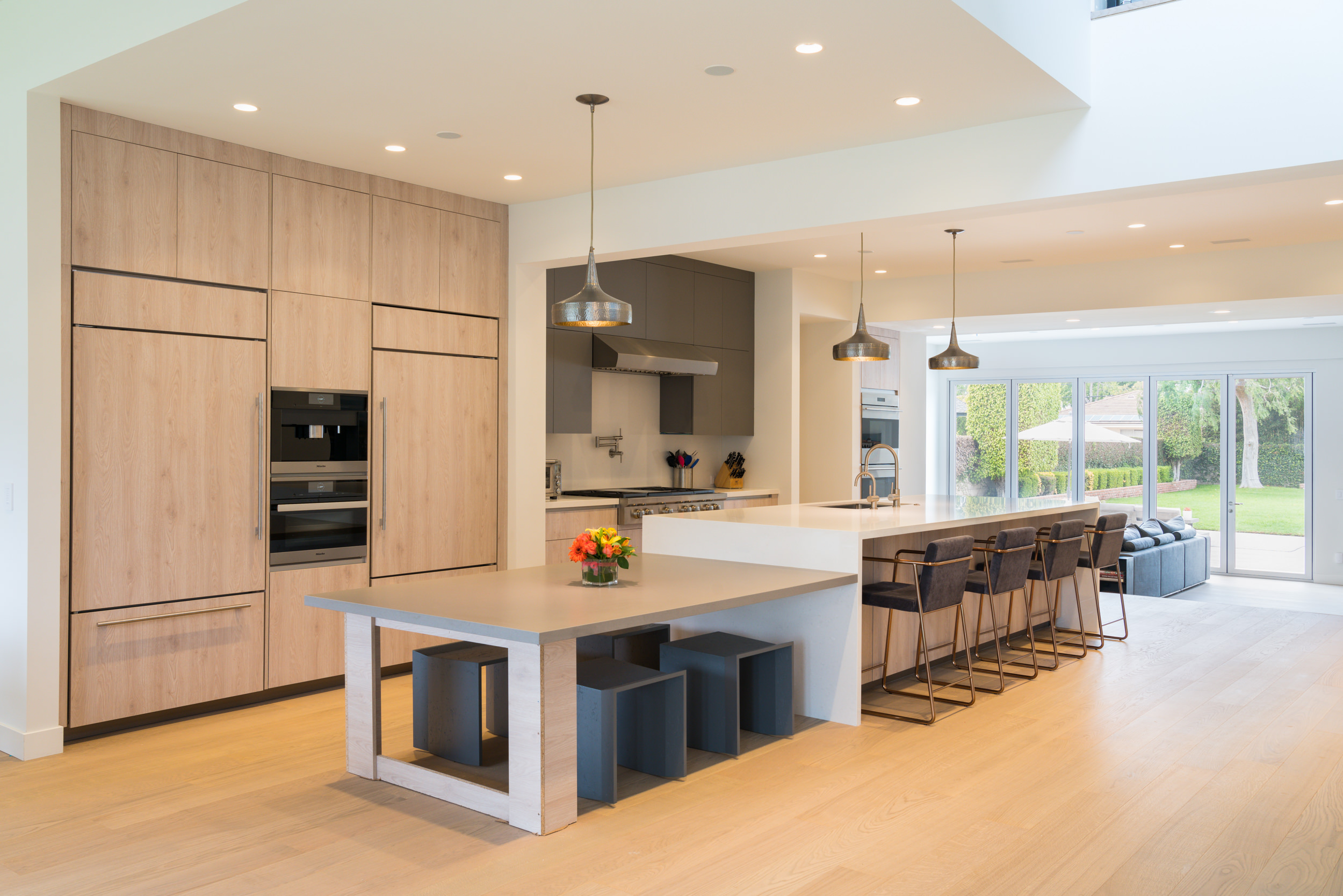
photo by Ketra
By Brielle Bryan
Moved by the desire to tackle the notion that comfort does not require a sacrifice in style, Jaclyn Jones has produced a selection of shoes that appeal to women of all different foot sizes. Her newest collection is inspired by the sights and smells of flowers, and consists of “summer-friendly, playful, bold colors that are immediately mood-boosting.”
“I imagine our customers having the freedom of versatility while wearing pieces in our collection,” Jones said. “They’re ready for everything from outdoor weddings to happy hour to vacationing in the Hamptons.”
Jones sources the highest quality materials, including a custom 4mm thick foam insole, luxurious lamb lining and signature features.

“Our manufacturing takes place completely in Los Angeles, and we are proud to support U.S. workers and our local economy,” Jones said.
Jones saw the opportunity to create Jaclyn Jones USA, the first luxury women’s footwear brand handcrafted entirely in the U.S., after working in men’s shoes for years. Jones worked for Pinnacle Brand Group, a premium design house that designs, sources, markets and distributes fashion footwear and accessories, before she came to a pivotal revelation.
“After some market research, I found that the industry was vastly dominated by male designers/owners, and it clicked — all of these shoes were so uncomfortable because they were designed by someone who never had to wear them,” Jones said.
Following her realization that women needed someone who understood the perils and anguish of uncomfortable shoes to design their footwear, Jones began crafting her namesake brand in San Diego in October.
After successfully taking her experiences and producing shoes that provide both comfort and style, Jones’ empowering brand for women is now available for purchase on her website in half sizes from 6 to 11.
Posey in White Multi Foral
An excellent choice for workweek styling and your wedding season wardrobe, this pointed-toe shoe will be a real showstopper for any nice occasion. The Posey style features a hand-carved 4-inch solid wood heel and custom 4mm foam insoles, which offer comfort similar to wearing 2-inch heels! This style is crafted with ultra-soft lamb leather lining and white multi floral printed leather, which is exclusive to JJUSA. $1,375.
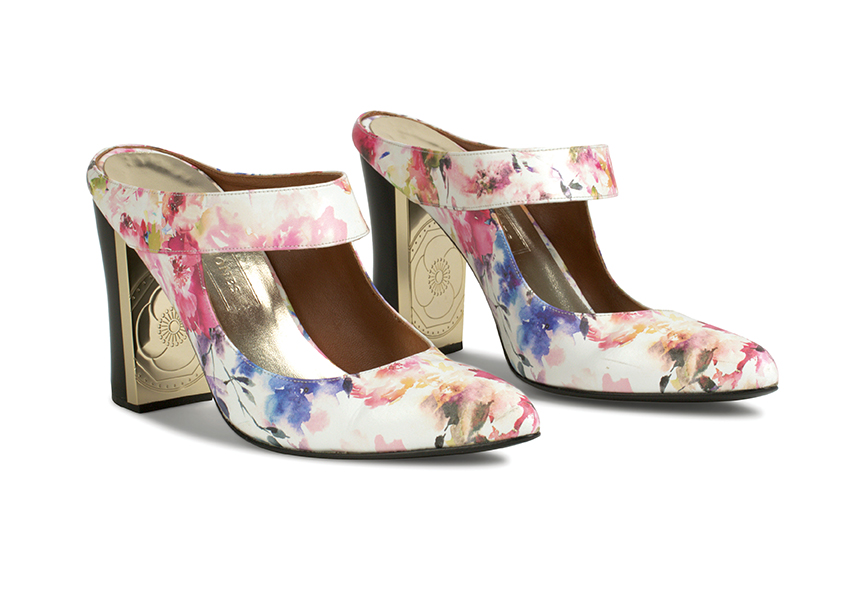
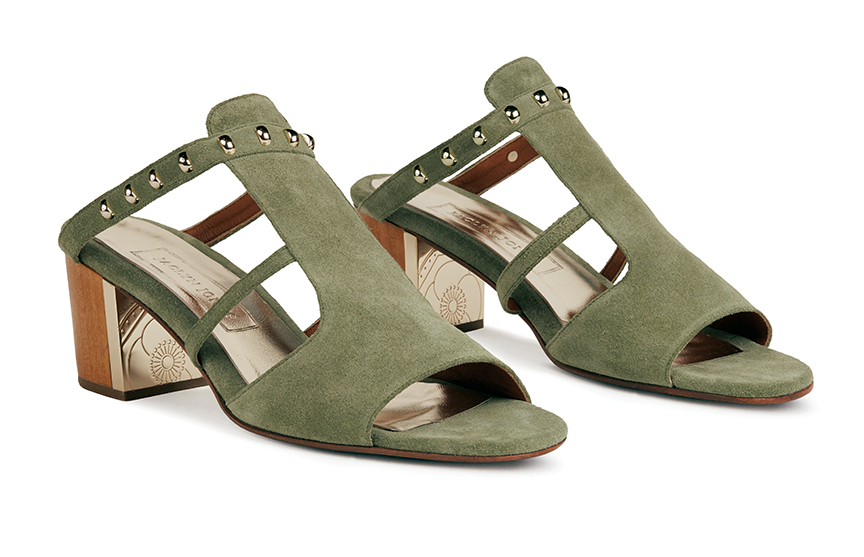
Clover in Sage
An adorable low-heel sandal crafted in versatile sage-colored suede, the Clover style features eye-catching gold studded accents. Built for walk-all-day comfort, this style features a hand-carved 2-inch solid wood heel and signature 4mm custom foam insoles. $1,095.
Water Lily in Gold
“Our easy-to-wear Water Lily sandals are the perfect vacation companions, featuring a pebbled gold leather upper, nude leather foot bed and fashionable strap with gold-studded accents,” Jones said. “The half-inch heel is built from stacked leather and the outsole features a rubber inset for added traction.” $850.
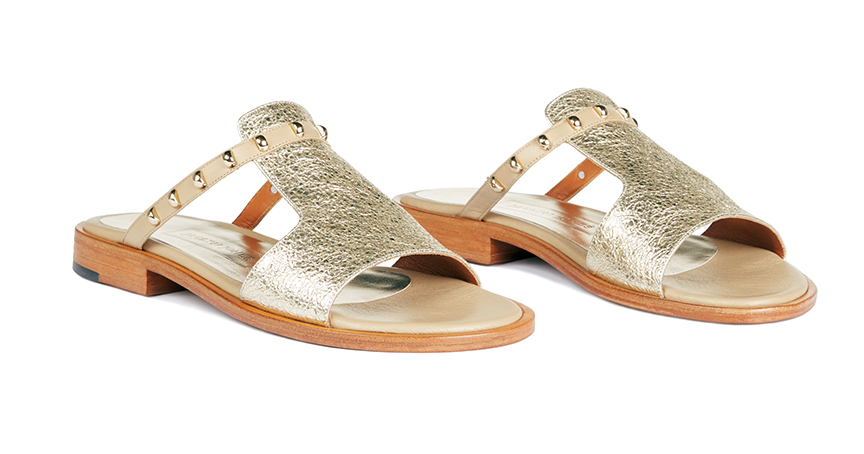
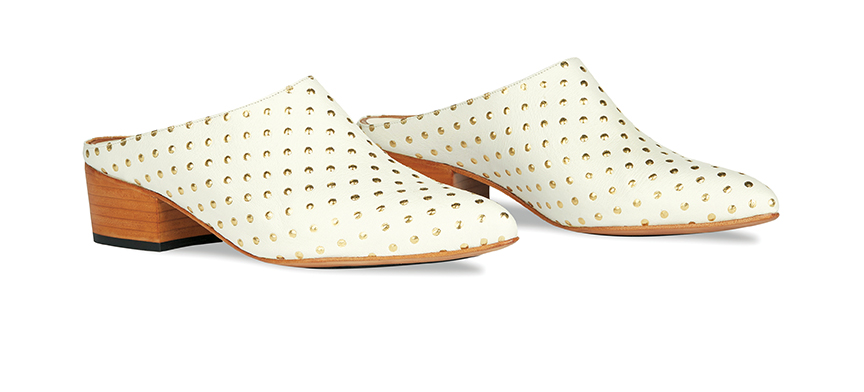
Calla Lily in White & Gold Dot
One of JJUSA’s most-loved styles of the season, Calla Lily is designed with a comfortable 1-inch stacked leather heel and an easy slip-on style. In addition to comfort, this chic pointed-toe shoe is made of premium lamb leather with a gold-dotted pattern, making this pair perfect for the seamless transition from the office to happy hour. $1,050.
Chrysanthemum in Tie-dye
This open-toe slide sandal is the epitome of summer design with its JJUSA-exclusive playful tie-dye print and logoed stud embellishments down the front of the shoe. The Chrysanthemum is crafted with premium lamb leather and a 2-inch hand-carved wood heel that features JJUSA’s signature heel plate and 4mm custom foam insoles for added comfort. $1,250.
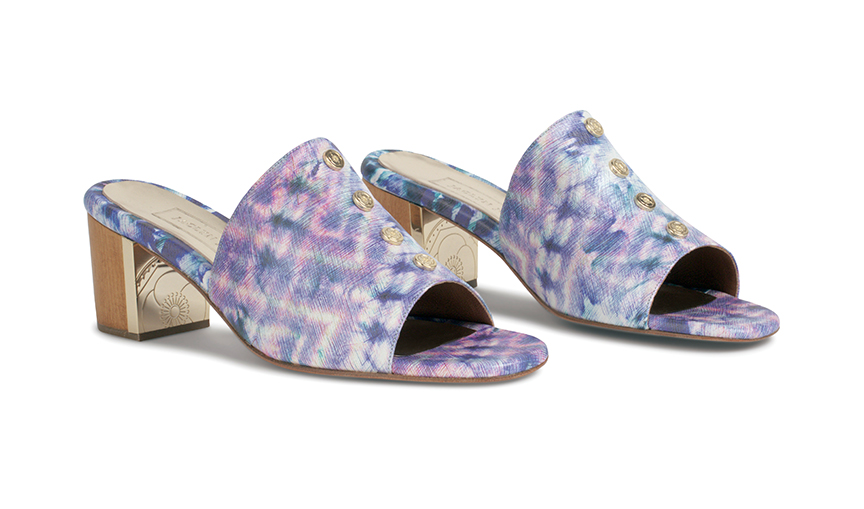
Photos courtesy of Jaclyn Jones USA











